Research at the Department of Biology at a glance
Enjoy this collection of insights into the buzzing research hive here at our department. It's a good read, we promise!
Research Group Bahl NEUROBIOLOGY
How neural networks make decisions
Whatever we see, smell, hear, or touch, our nervous system transforms information from our senses into behavior. We somehow effortlessly retain a memory of these cues, integrate signals over time and across modalities, and constantly make decisions about what to do next. Despite the importance of such processes for our daily life, it remains poorly understood how the underlying computations are implemented in the brain. The larval zebrafish is an ideal animal model to address such questions. It is a small and almost perfectly translucent vertebrate that has a brain similar to ours and that is amenable to genetic modifications. These features allow the lab of Dr. Armin Bahl to combine precise behavioral tracking experiments, whole-brain activity imaging, as well as targeted circuit manipulations, to investigate the neural basis of decision-making.
“We seek to understand how the brain transforms information from its senses to behavioral output, in particular in the context of decision-making. For this, we study the role of individual cells within the circuit and how network dynamics affect motor control. Of course”, as Dr. Armin Bahl points out, “we cannot investigate such questions in humans, but we need much simpler model systems that can easily be studied in the lab. We chose the tiny larval zebrafish as an animal model and use whole brain imaging techniques to link nervous system function to behavioral decisions.”
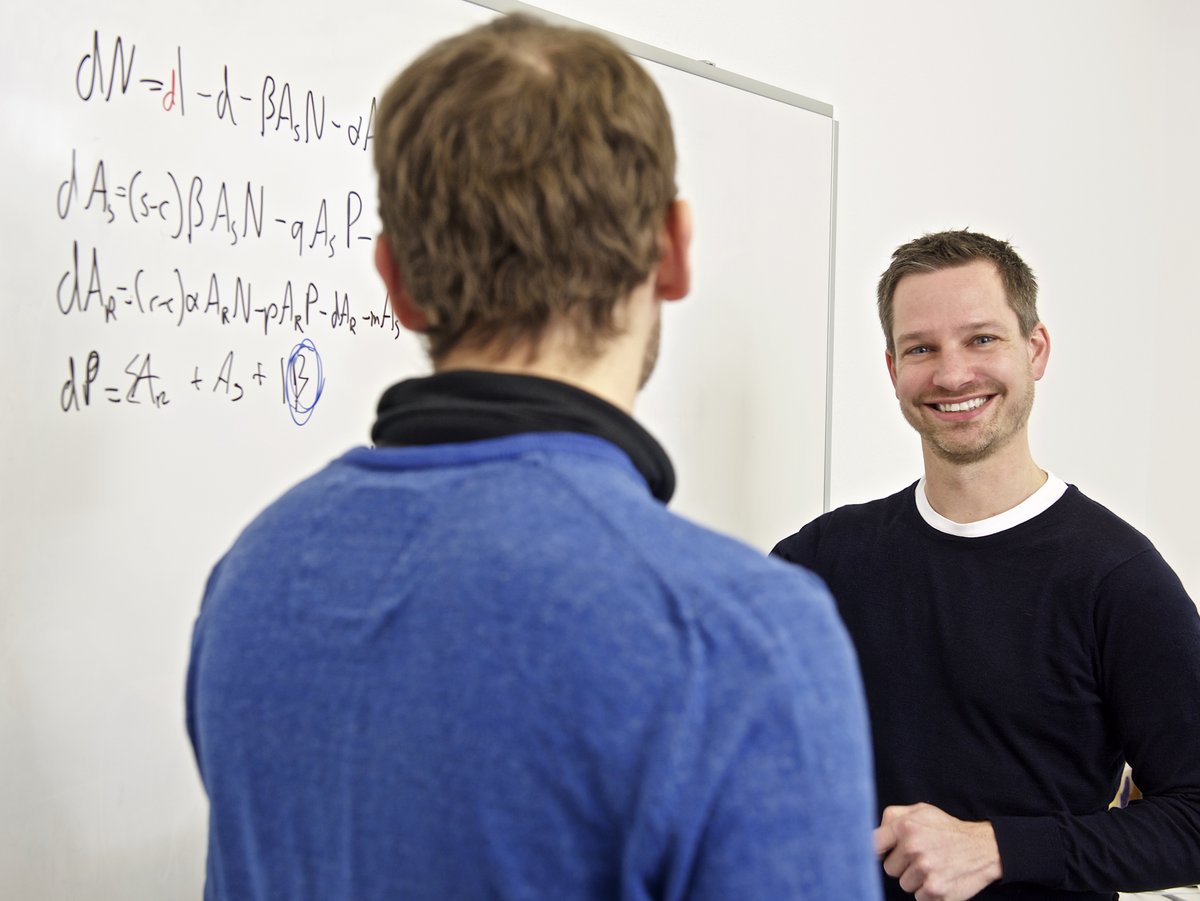
Research Group Becks AQUATIC ECOLOGY & EVOLUTION
From genes to communities and back
The traditional view is that evolution and ecology act on two different time scales, but a growing body of evidence shows that ecological and evolutionary processes occur often on the same time scale, altering continuously each other’s trajectories (eco-evolutionary dynamics). These complex interactions of evolutionary and ecological processes influence the diversity at the phenotypic and genetic as well as on the individual, population, and community level.
“Therefore”, Lutz Becks details, “the mechanisms that drive ecological and evolutionary changes such as diversification and the maintenance of diversity can only be understood when we study the ecological and evolutionary processes using approaches that allow for their mutual interactions. To understand these mechanisms is the core interest in the fields of ecology and evolution and will help us make better predictions and develop strategies to cope with the consequences of global change. Our research focuses on gaining a mechanistic understanding of species interactions in aquatic microbial systems, including the evolution and ecology of exploitative, competitive and symbiotic interactions. We combine experimental evolution and ecology with mathematical modelling and genomics to study genome-wide molecular evolution. It is an exciting time to work in this field, as state-of-the art methods allow us now to follow and connect ecological and evolutionary changes on population and community levels as well as on the phenotype and genome level”
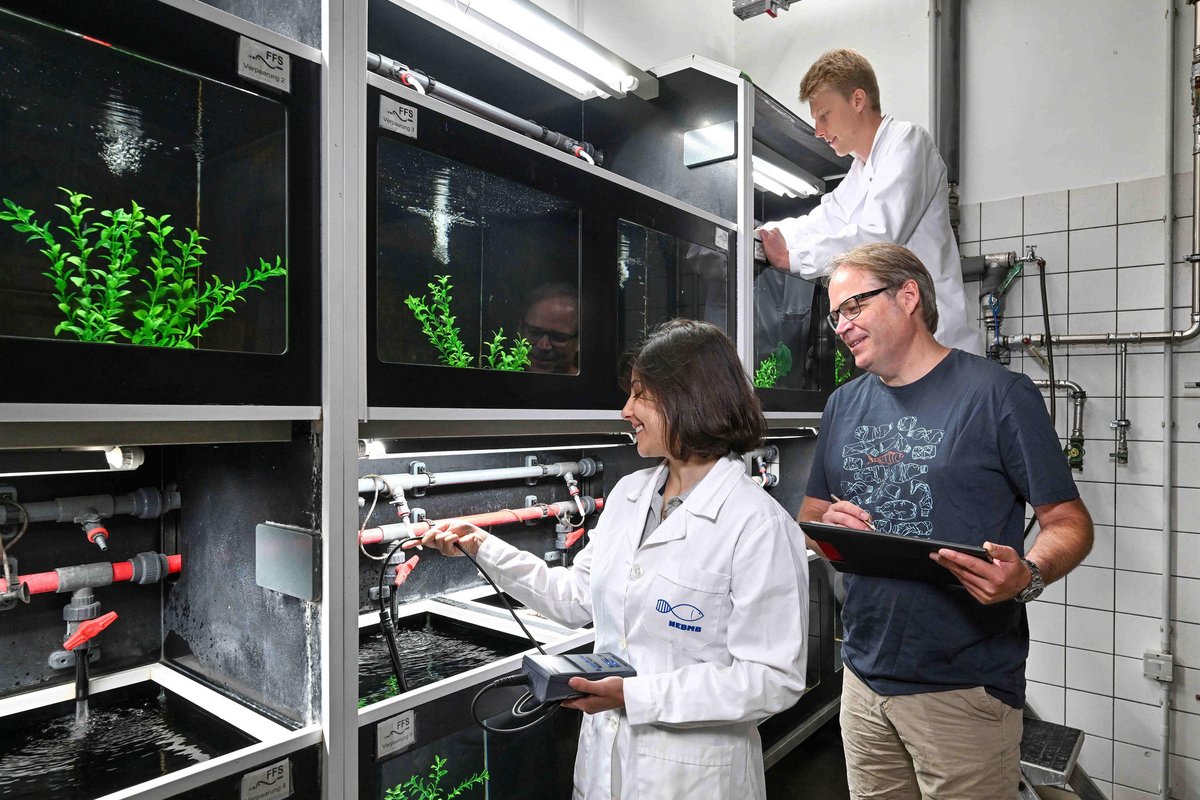
Research Group Brinker FISH ECOLOGY
From research to applied species conservation
Southwest Germany is characterized by a diverse river and lake landscape that harbours a large and fascinating variety of fish, lamprey and crayfish species. However, this unique diversity is threatened by a number of mostly anthropogenic pressures. These include the deterioration of natural waters, the spread of invasive species, the worsening climate crisis, and exposure to pollutants such as microplastics and fish-eating predators.
"In order to successfully advance the conservation of our native fish fauna, it is essential to identify these pressures and gain a more comprehensive understanding of the complex interactions between them," explains Alexander Brinker. "Our research questions are always of an applied nature and as diverse as the challenges facing the local aquatic fauna. In particular, the effects of climate change, including rising temperatures and water scarcity, increased virulence and transmission of aquatic pathogens, and the rise of apex predators such as the 2-meter-plus Wels catfish. Another focus is the in-depth analysis of large-scale changes in the Lake Constance ecosystem resulting from the introduction of invasive species, including the quagga mussel and the three-spined stickleback. Our work also includes angling-related topics such as fishery-induced selection caused by predatory behaviour of pike."
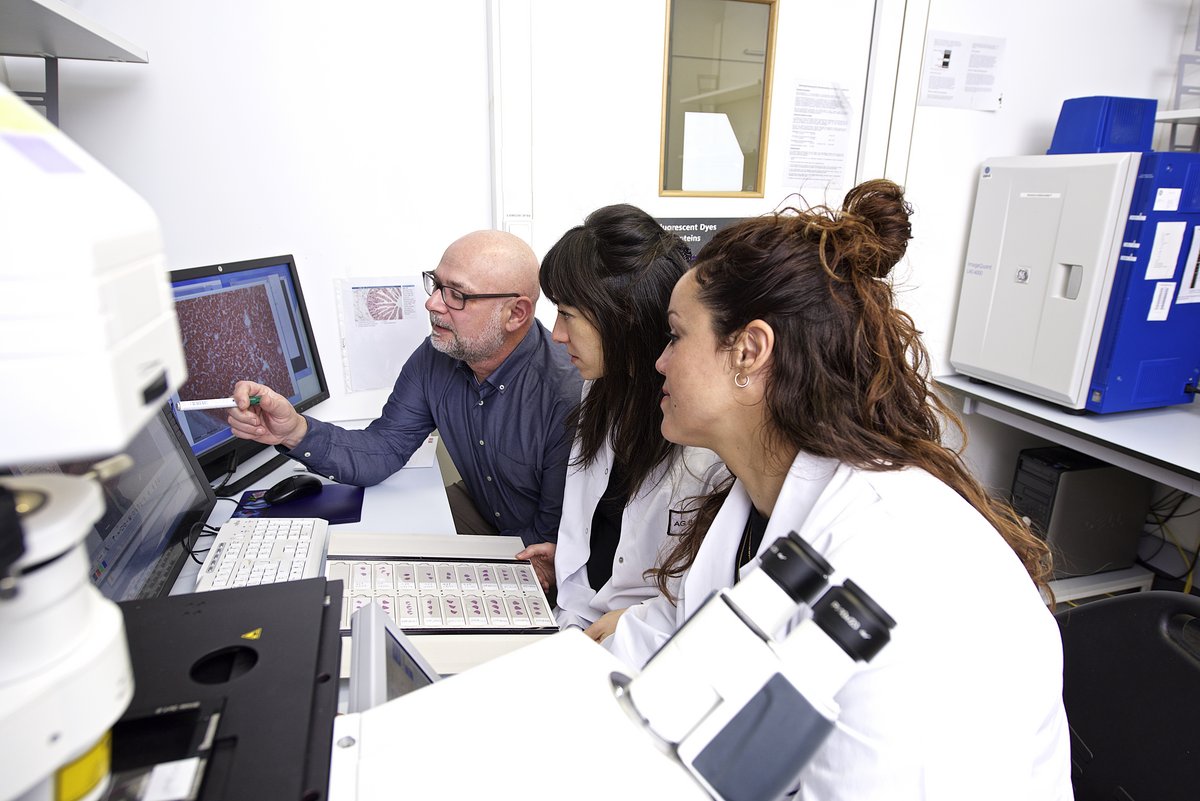
Research Group Brunner BIOCHEMICAL PHARMACOLOGY
A matter of life and death
Precise coordination of growth, survival, and death of cells is essential for the maintenance of tissue homeostasis and function in multicellular organisms. Deregulation of these processes, such as excessive cell death or uncontrolled proliferation, is the basis of many human diseases, including immunopathologies and cancer. Understanding these processes on the molecular level in health and disease as well as exploring possibilities for pharmacological manipulation is the major research focus of the team of Prof. Thomas Brunner.
“We want to unravel why some cells and tissues are resistant to given disturbances, whereas in others the same stressor causes massive cell death and loss of function,” Thomas Brunner says. “What is the difference between normal tissue cells and tumor cells? What changes from healthy conditions to diseased stages? Ultimately, the accumulated knowledge should encourage the development of novel pharmacological approaches to specifically target cells, e.g. tumor cells, for cell death induction, while healthy tissue is protected.”
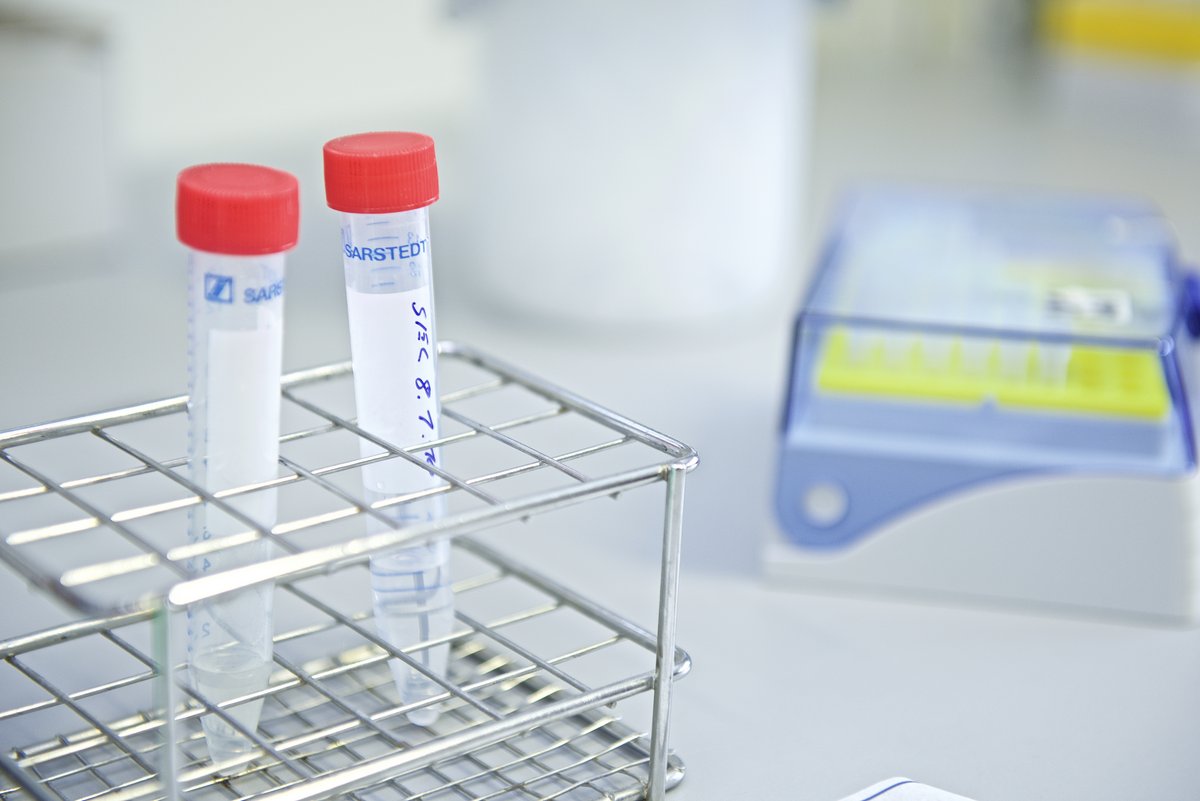
Research Group Bürkle MOLECULAR TOXICOLOGY
DNA under attack
Our genomes are under constant attack by reactive agents from internal and external sources. Over a day, this leads to thousands of DNA lesions within each cell of our body, most of which are efficiently fixed by a complex network of DNA repair mechanisms. If not repaired properly, DNA lesions can cause mutations, cellular transformation or cell death. Interestingly, inducing DNA damage and/or inhibiting specific DNA repair processes can be employed in clinical cancer therapy. Understanding the molecular mechanisms of the cellular genotoxic stress response as well as mechanisms of action of selective chemotherapeutics and of novel compounds to protect the cellular genome is the main research interest of the Molecular Toxicology group.
“We want to understand how different genotoxic agents damage DNA and how cells deal with this damage on a molecular, cellular and organismic level. Furthermore, we develop novel in vitro methods for quantifying various types of DNA damage.”, Alexander Bürkle states. Aswin Mangerich further explains: “For example, we are interested in the posttranslational modification PARylation, which is mediated by poly(ADP-ribose) polymerases (PARPs). We are analyzing how PARylation participates in the DNA damage response and which consequences this has on cellular physiology and pathophysiology.”
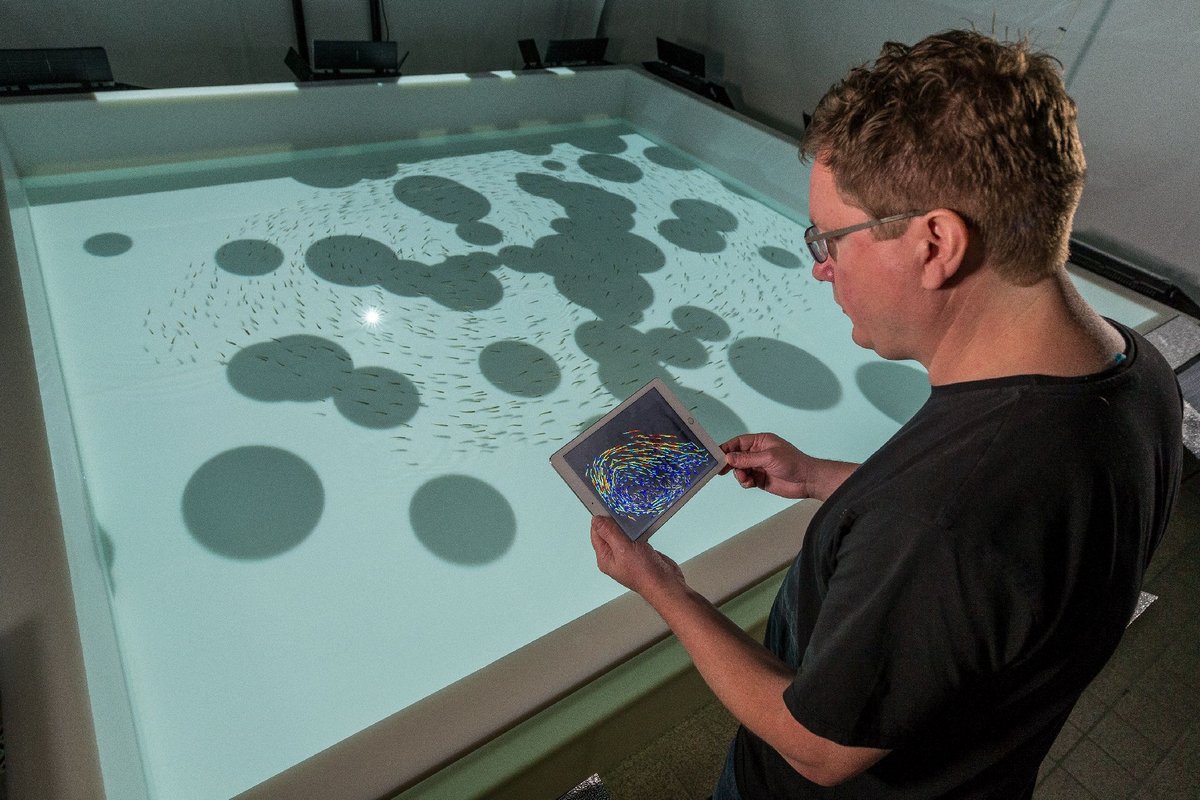
Research Group Couzin COLLECTIVE BEHAVIOR
The effective collective
Collective behavior produces some of the most captivating, and ecologically-important, patterns on Earth: Billions of locusts devour crops; schools of fish convulse like some animate fluid while under attack from predators; and our own societies are characterized by cities, with buildings and streets full of color and sound, alive with activity. Interactions impact how all social organisms make decisions regarding almost every aspect of life, including when and where to move, what to eat, and with whom to associate and mate. Developing a quantitative understanding of both how, and why, organisms form collectives, and particularly the informational benefits obtained by coordinating activity with others, is the focus of work in Iain Couzin’s team.
“We aim to explore functional properties of groups in a context that can reveal how, and why, social behavior has evolved,” says Iain Couzin. “Organisms need to make decisions under conditions of uncertainty, and often considerable risk. How do they do so, and how may social interactions facilitate more effective sensing, information processing and decision making? Under what conditions do social interactions instead give rise to collective stupidity? The science of collective behavior is fundamental to addressing such questions across scales of organization in biology, from cellular interactions to those among plants or animals.”
Research Group Couzin-Fuchs NEUROPHYSIOLOGY
From sensory perception to action
Sensing is often an active process. Information acquisition both influences, and in turn is influenced, by movement of sensory acquisition organs, such as eyes, head or antennae. Animals actively sense their environment and may move such as to minimize uncertainty.
“Our research focuses on understanding relations between insect sensory perception and action. As main model organisms, we use cockroaches and migratory locusts. The former renowned for their speed and agility, crucial features for their evolutionary success, while the latter for their extreme phenotypic plasticity, mass migrations and immense agricultural and ecological importance. In different projects, we study the neural and behavioral mechanisms via which insects sample their olfactory environment. Compared to touch or vision, olfaction has long been seen as a passive sense. However, throughout the animal kingdom self-generated movement (e.g., sniffing, antenna movement, flight maneuvers) are used to bring new odorants to the olfactory organs. Using computer vision, electrophysiology and calcium imagining we study the mechanisms by which insects move to smell and smell to move”.
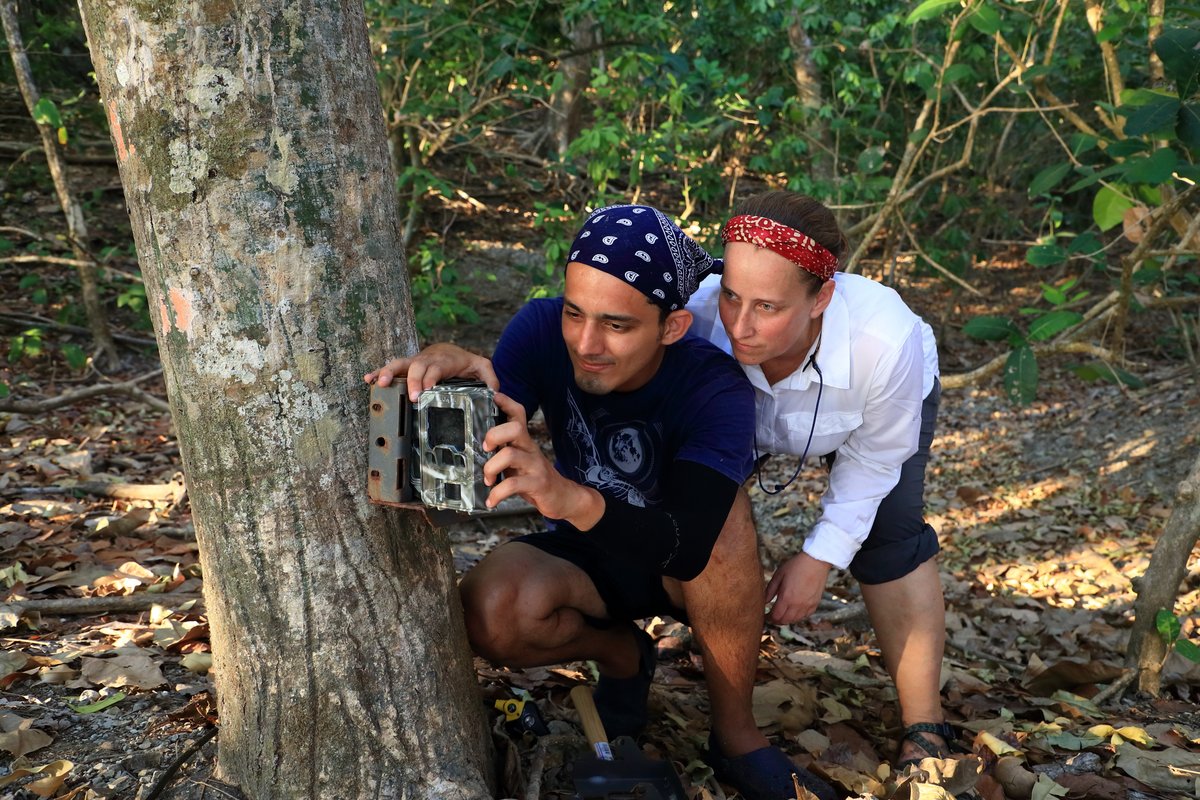
Research Group Crofoot ECOLOGY OF ANIMAL SOCIETIES
The science of the sociome
For many animals, ecological and evolutionary success depends not only on the characteristics or decisions of lone individuals, but also on what happens when groups of individuals come together and interact. These collective behaviors and traits are important because they can transform the social landscape, giving rise to novel selective pressures that drive the evolution of social complexity. Understanding how animal societies emerge and function is the central goal of the research group of Prof. Meg Crofoot.
“We are interested in the evolution of complex social systems,” explains Meg Crofoot. “How do collective behaviors emerge from the interactions between individuals? How do group-living animals overcome conflicts of interest to achieve shared goals? To answer these questions, our team uses a collaborative multi-disciplinary approach, developing new methods of measuring, analyzing, and interpreting animal behavior. We use remote tracking technologies, together with field-based experiments and observations, to explore group movement and decision-making under socially and ecologically relevant conditions.”
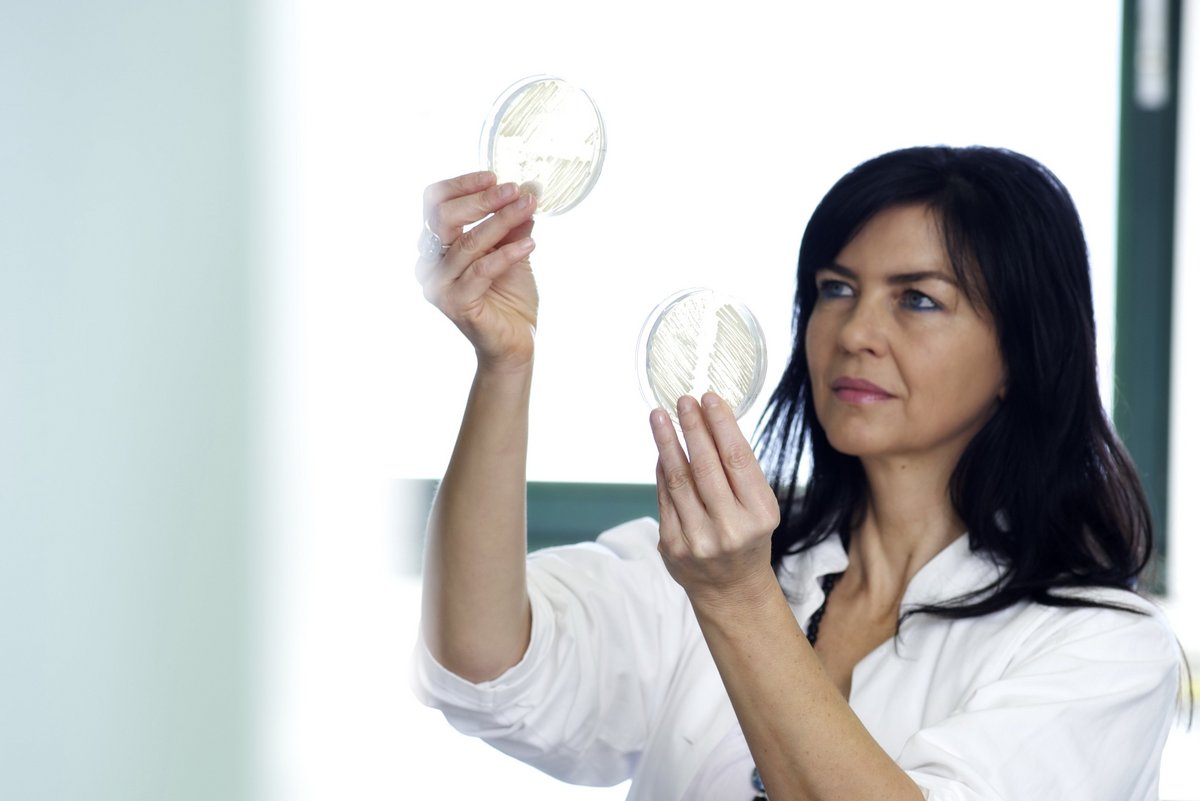
Research Group Deuerling MOLECULAR MICROBIOLOGY
Who Wants to Live Forever
The fitness and viability of cells, tissues, and organisms critically depends on the functionality of the cellular proteome. Proteostasis describes the concept of multiple integrative pathways that control and regulate protein activities in space and time. This guarantees a functional proteome over the lifetime of an organism and allows it to adapt to stress and changing environmental conditions. Defects in proteostasis pathways can lead to premature aging and diseases like Alzheimer’s, Parkinson’s and cancer. Understanding the basic principles of proteostasis under normal, aging and disease conditions is a major focus of the Deuerling Group with an emphasis placed on the analysis of protein biogenesis and the functions and mechanisms of molecular chaperones.
“We are far from understanding the underlying mechanisms of proteostasis and how dysfunctions in proteostasis cause diseases and cell death”, Elke Deuerling says. ”Our major goal is to understand the critical role of chaperones in proteostasis and how we can modulate proteostasis pathways to enhance fitness and lifespan.”
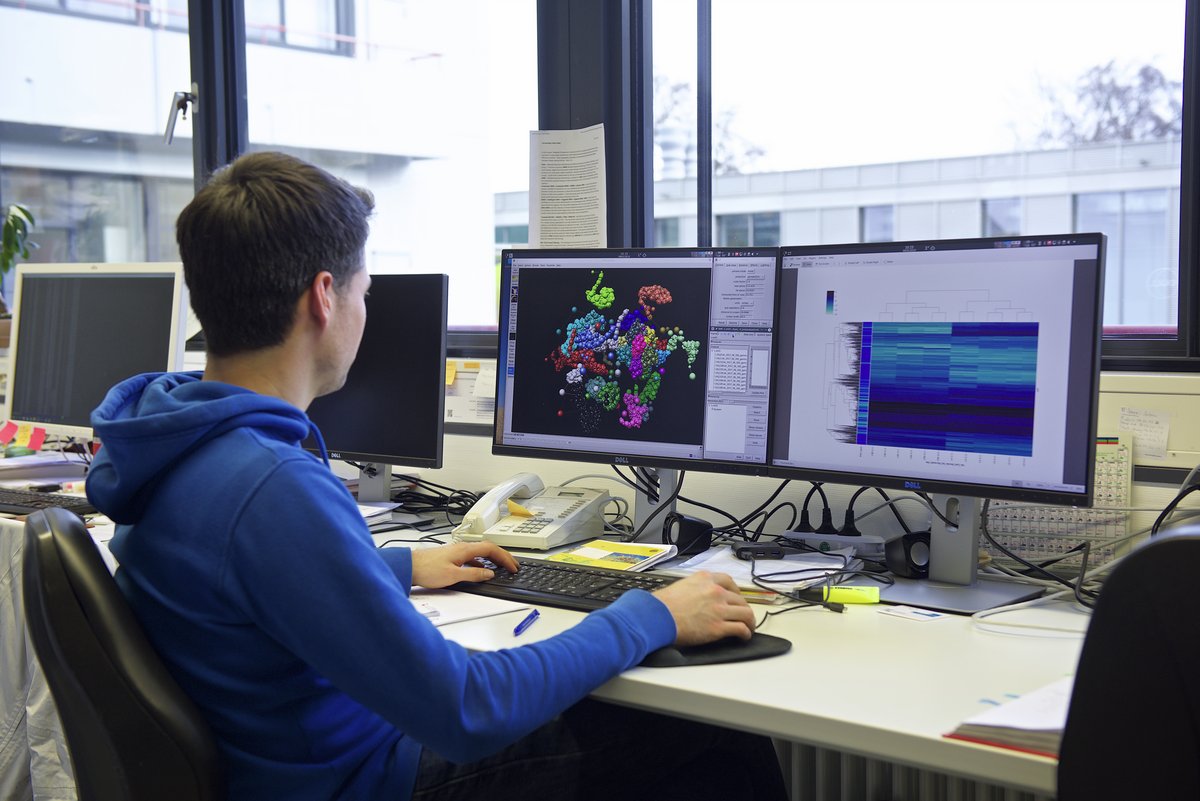
Research Group Diederichs MOLECULAR BIOINFORMATICS
From data to models
Bioinformatics brings tools from Computer Science into Biology. These are rooted in algorithmics, statistics, and ultimately mathematics, and are needed to interpret and possibly understand experimental data. The work of the Diederichs group is fueled by three topics: 1), analyzing the relation between data and model quality in X-ray structure analysis of macromolecules with the goal of understanding the prerequisites for structure solution and successful refinement of macromolecular models. 2), Co-developing (with W. Kabsch) the data analysis software XDS that is the basis for more than 50 % of PDB depositions currently. 3), providing a multi-dimensional description and analysis of similarities (measured e.g. by correlation coefficients) between noisy experimental data sets, where the interest is towards their underlying heterogeneity.
“We won't survive the data deluge with the tools that the first generation of bioinformaticians came up with”, says Kay Diederichs. "The questions and kinds of data are constantly changing, and get more challenging. We need the skills to develop and implement new algorithms. This requires an understanding of the biology, and a mastering of the concepts and language of Computer Science.”
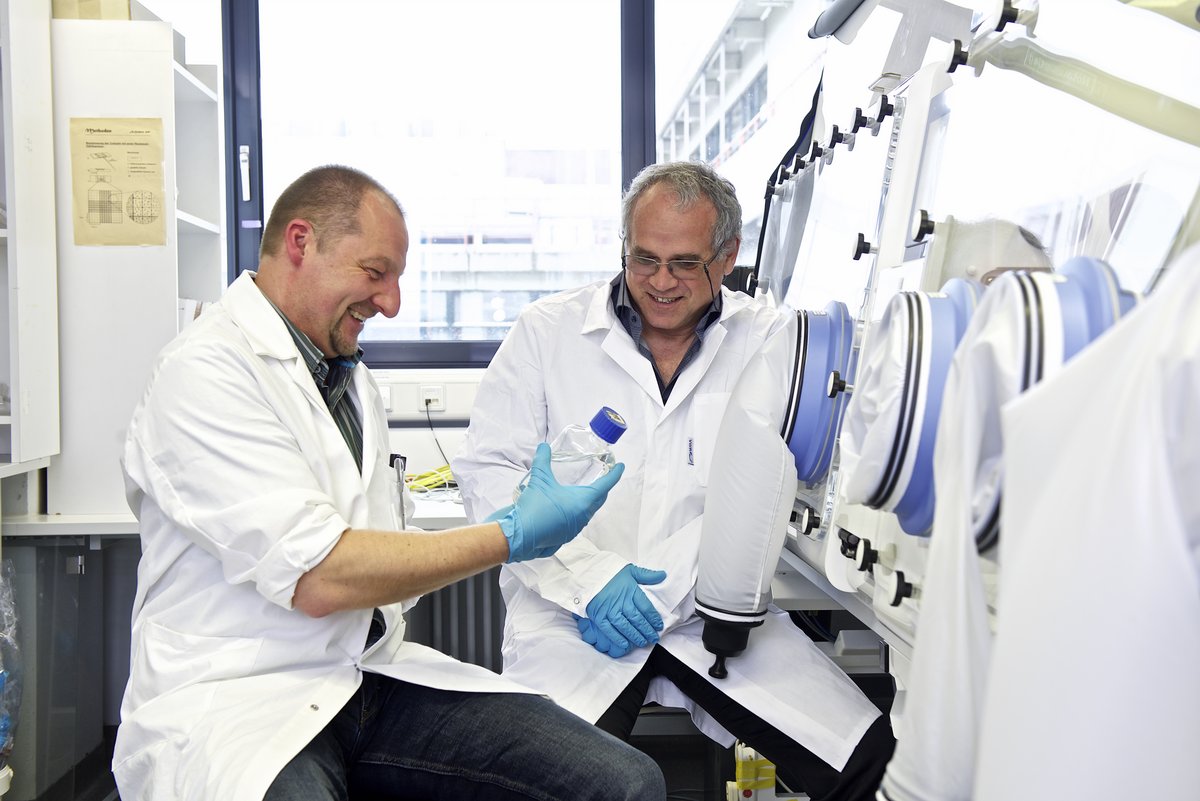
Research Group Dietrich ECOTOXICOLOGY
From toxin to risk
In everyday life, humans are exposed to natural toxins and derivatives via food and drinking water. Determining their potential toxicity and, in consequence, the possible risk is one of the most challenging questions considering today’s low-level exposures. Animal testing has been criticized as inadequate for determining toxicity and risk in humans. Yet, the alternative of using human cell lines also raises questions about extrapolation to the whole organism. Toxin occurrence in surface waters, toxins in food and drinking water, and the assessment of their toxicity in specific cell systems are among the main research topics investigated by the team of Prof. Dan Dietrich.
“We want to understand how structurally similar toxins from blue-green algae (cyanobacteria), plants, mycotoxins or drugs affect humans when exposed to repeated small concentrations over a given time. For this”, Dan Dietrich points out, “we not only need to work with human cells, but rather have to develop human cell systems that simulate the situation in the affected organ. As we cannot work with all organs at the same time, we have focused on developing multi-cell type test systems for the human kidney.”

Research Group Dörken EVOLUTION & BIODIVERSITY OF LAND PLANTS
Plants in detail
Prof. Veit Dörken and his team investigate the structure of land plants under evolutionary, ecological and systematic aspects. One research focus is on adaptations to changing environmental conditions, especially to heat, drought, and UV stress. In this way, they contribute to a better understanding of plant reactions to climate change. Another is set on the reproductive structures of gymnosperms to gain new insights into aspects that were previously not understood, such as the evolutionary origin of gymnosperms. Knowledge of the reproductive structures is also crucial for understanding the relationships between species. As a result they have proposed numerous and far-reaching systematic regroupings.
“Our research on coniferous reproductive structures focuses on the formation of the bract/seed scale complex in seed cones and on the identity of the pollen sac carrying structures in pollen cones. We determine the exact sequence of arrangement of the organs, especially that of the ovules. In addition, the data obtained should contribute to a better understanding of pollination processes, because even the smallest structural change in the cone structure has a lasting effect on pollination success. In this turn we also investigate the formation and retraction of the pollination droplet and its reactions to trapped pollen grains. For these micromorphological studies, we use scanning electron microscopy and can thus visualize structures even in the thousandth of a millimeter range with high resolution.”
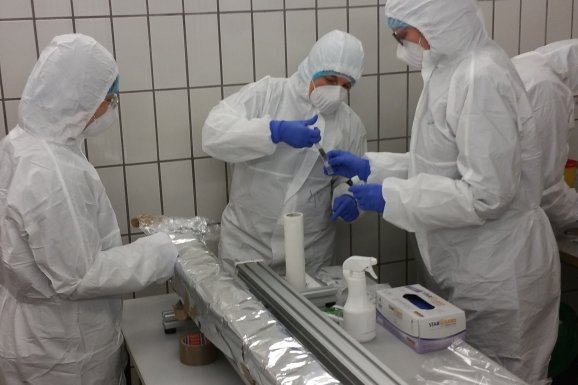
Research Group Epp ENVIRONMENTAL GENOMICS IN AQUATIC SYSTEMS
Using DNA to track ecosystem history
DNA is shed into the environment from all organisms, making it possible to use environmental samples, such as lake water or sediment, to catalogue biodiversity. This environmental DNA, or eDNA, can deliver information on organisms from across the tree of life, even without any visible traces. Lake sediments contain eDNA from both the immediate aquatic environment and from its terrestrial surroundings. Sediment cores present an archive of past ecosystems, recording organisms - and their DNA - present at the time of sediment deposition.
"We use eDNA to track species and ecosystem changes through time and space," says Laura Epp. "By analyzing ancient eDNA stored in sediment cores, we obtain detailed temporal records of biodiversity and its fluctuations. The analysis of ancient eDNA makes it possible to trace organisms that do not leave visible remains and to detect variation at the genomic level. We thus investigate effects of environmental changes, both induced by direct human impact and by climate change, on whole communities and on populations of single species through centuries and millennia."
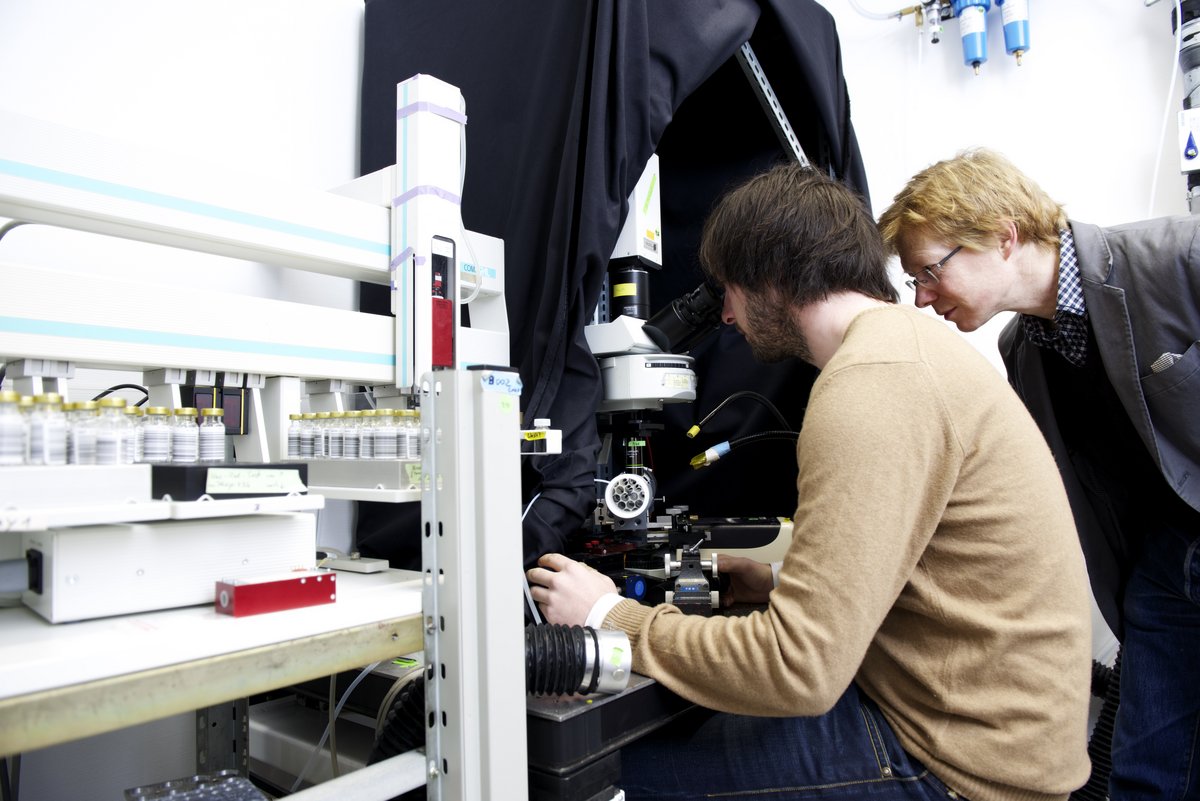
Research Group Galizia NEUROBIOLOGY
Cracking the insects’ code of olfaction
In insects, olfactory information is processed in the antennal lobe, which is structured in functional subunits (olfactory glomeruli). From here, afferent receptor neurons relay the processed information to higher-order brain centers. Odors are coded in across-glomeruli activity patterns, which are combinatorial. This means, one subunit may be part of the code for quite different odors and that an odor is coded in the activity of a specific pattern of glomeruli, rather than a single glomerulus.
Giovanni Galizia summarizes the main research questions of his group: “How do animals recognize different odors, odor mixtures, and concentrations? How is time and space of the olfactory space encoded? How is time and neuron identity used for coding information? Finally, how does olfactory coding change when memories are formed? By using optical imaging techniques, it is possible to simultaneously measure the activity of several glomeruli, and thus monitor their role in olfactory coding. We study honeybees: they have an exquisite olfactory memory, and sophisticated olfactory communication coordinating social behavior. We study fruit flies: genetic tools allow us to investigate olfactory coding down to cellular level. We study locusts: understanding their olfactory code may help us develop new techniques to control.“
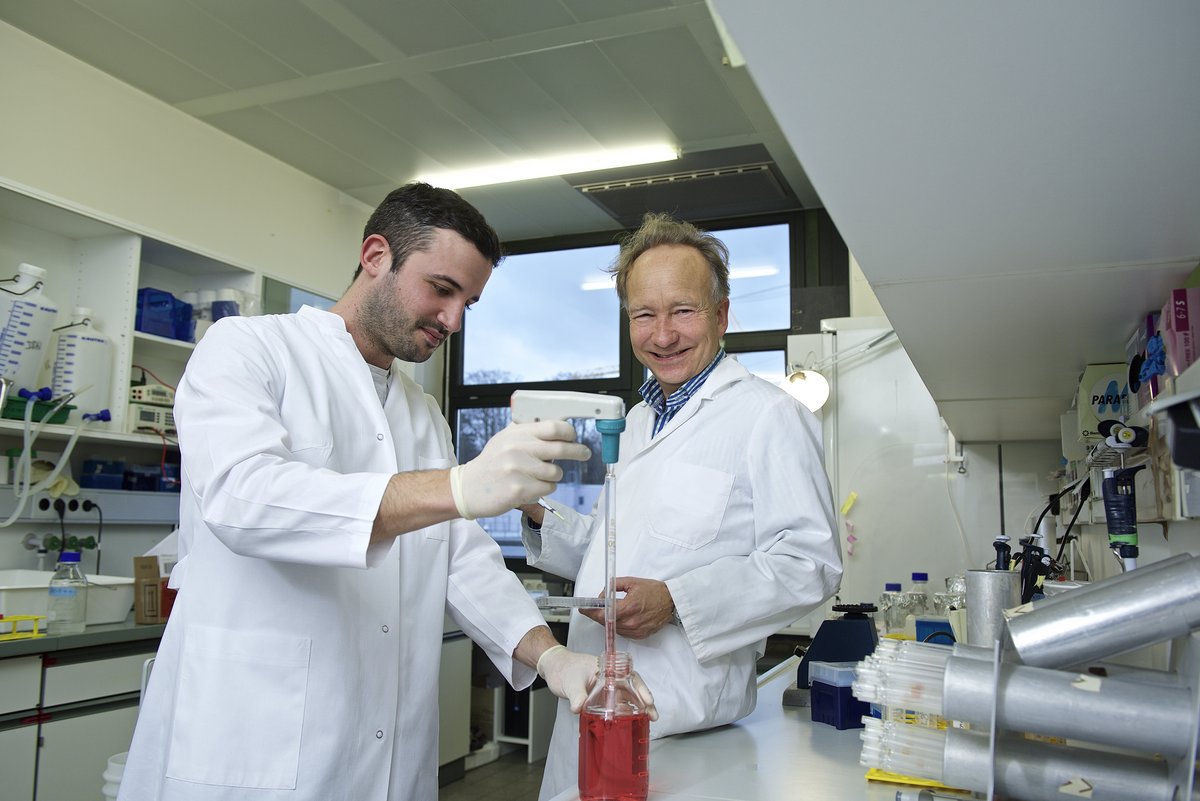
Research Group Groettrup/Basler IMMUNOLOGY
Fighting autoimmunity
Autoimmune diseases like Multiple Sclerosis, Rheumatoid Diseases or Inflammatory Bowel Disease develop when our immune system reacts against our own tissues. The Groettrup group works on an enzyme called the ‘immunoproteasome’ which is highly prevalent in those leukocytes that cause autoimmunity. We are investigating how the inhibition of the immunoproteasome interferes with the development and exacerbation of autoimmune diseases, the rejection of transplanted organs by the immune system, and growth of cancer cells.
Marcus Groettrup: “The immunoproteasome is involved in the degradation of proteins mainly in inflamed tissues and in cells of the immune system. The finding that the immunoproteasome is crucially involved in the pathogenesis of autoimmune diseases and the rejection of transplanted organs was quite a surprise – a surprise which has led to clinical testing of immunoproteasome inhibitors in patients.”
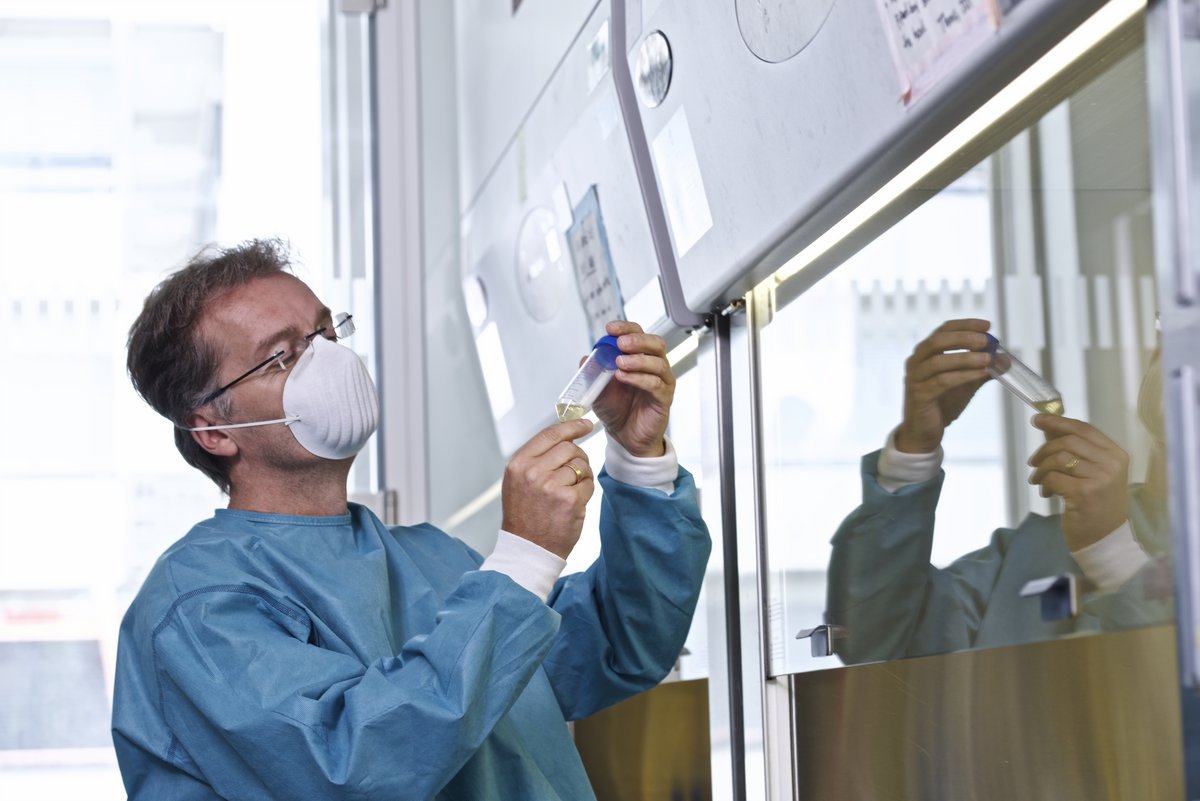
Research Group Hauck CELL BIOLOGY
A sticky business
Multicellular animals depend on cell adhesion receptors to build functional tissues and organs. The underlying cell-cell as well as cell-matrix contact sites not only have to provide mechanical support, but need to be regulated in time and space to allow dynamic processes such as cell adhesion, cell migration or immune responses. Interestingly, cell adhesion receptors seem to be preferred target structures for a number of viral and bacterial pathogens trying to contact their host. Understanding the molecular underpinnings of the physiological regulation of cell adhesion sites and their exploitation by disease-causing microbes are in the focus of Prof. Christof Hauck’s research team. Progress in this area might lead to novel translational approaches that limit infectious diseases or that counteract pathological cell behavior such as tumor cell invasion and metastasis.
“I was always fascinated and perplexed by the intriguing interplay between seemingly ‘primitive’ microbes and our own cells,” Christof Hauck says. “Often the bacterial weaponry is so extremely precise that it can even discriminate between human proteins and the almost identical chimpanzee or gorilla homologues. It comes as no surprise that such kind of molecular precision tools have been extremely helpful in teasing apart physiological processes and the regular function of proteins in our body.”
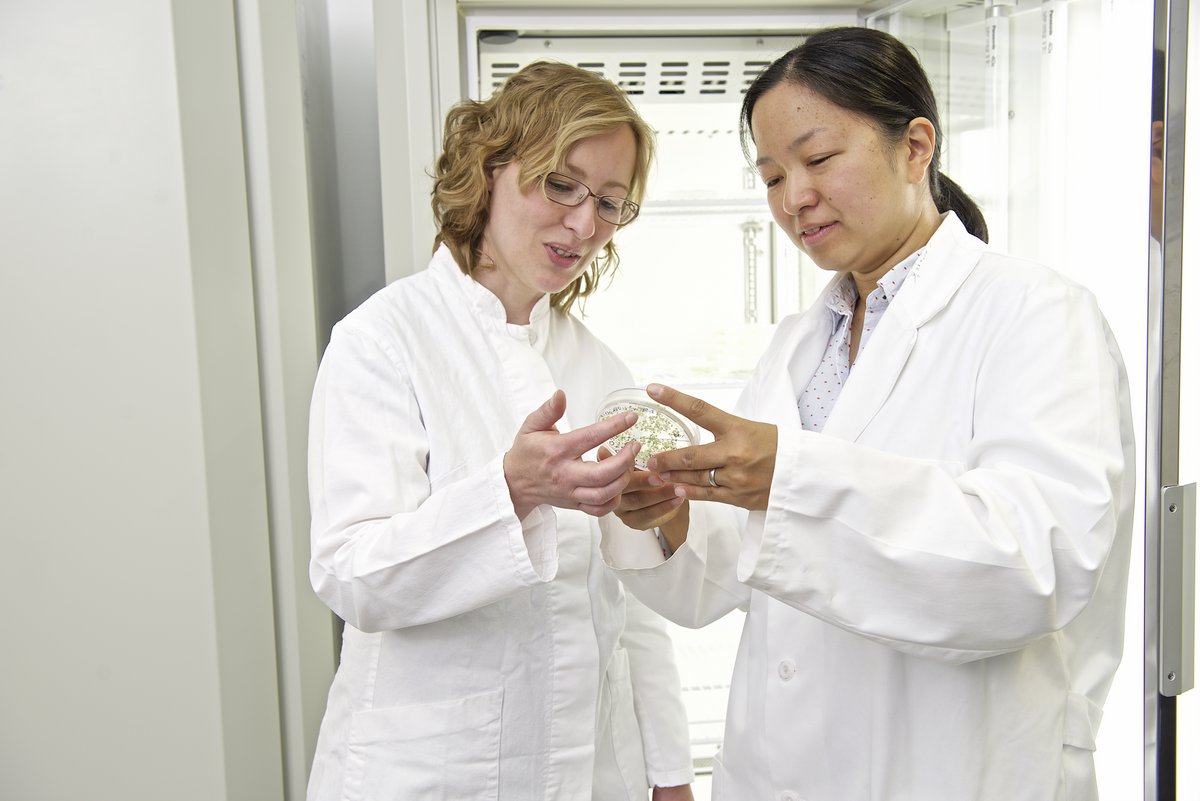
Research Group Isono PLANT PHYSIOLOGY AND BIOCHEMISTRY
Trafficking routes in cells
One of the key challenges for organisms is to quickly recognize and adapt to the constantly changing environment. Plants, as sessile organisms, have to cope with various biotic and abiotic stresses as well as coordinate their growth and development with e.g. light, temperature, and the availability of nutrients and water. The lab’s focus is to understand the intricate network of proteins that enables plants to react properly to environmental stimuli, and to elucidate the molecular mechanisms regulating these processes.
“Transport of proteins via different intracellular trafficking pathways is crucial for plants. It ensures the right set of proteins to be at the right place at the right time“, says Erika Isono. “It is fascinating how proteins with different biochemical activities interact and function together to regulate each cell and thus the response of a whole organism. We are especially interested in the function of post-translational modification by the small modifier protein ubiquitin in this pathway. By combining methods in biochemistry, molecular biology and cell biology, we want to understand the function of individual components of this pathway and the molecular network they build to ensure the survival of plants under diverse environmental conditions.”
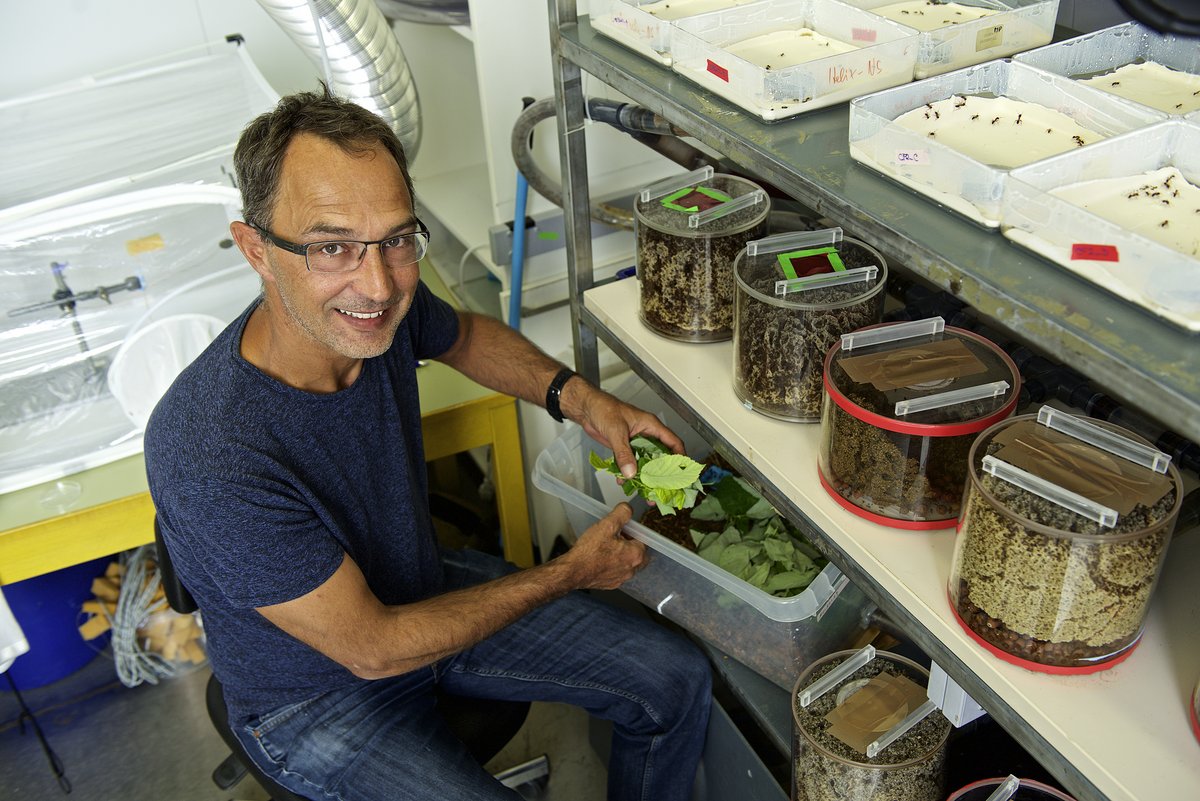
Research Group Kleineidam BEHAVIORAL NEUROBIOLOGY
Team work in social insects
Team work is fun, and diversity within a team is often beneficial. Individuals working in teams strive to achieve a common goal and each one contributes according to individual capabilities and talents. Division of labor in teams also occurs in non-human societies and is a key characteristic of social insects, where thousands or even millions of individuals are organized into a functional unit. Understanding the underlying principles that create and sustain diversity within colonies, while maintaining group cohesion with collective properties is the research focus of Prof. Kleineidam's team.
“Why are some ants readily attacking competitors and others are reluctant to do so? Why are few persistently removing obstacles, allowing all the others a comfortable travel along the cleared trails? Why are some bumblebees eagerly caring for the brood while others seem careless? Such simple questions are normally asked by kids, and they are still relevant for me to learn about the organization within insect colonies" Christoph Kleineidam describes. "We study the underlying neural mechanisms that lead to context-specific behavioral responses. We investigate how sensory information is evaluated and what kind of information, be it private or social, is used for decision making of individuals."
Research Group Kopp SOCIALITY & EVOLUTION
From animal behavior to macroevolution
Tremendous efforts have been made to describe the Earth’s biodiversity and identify the processes that shape it. How behavioral traits, through their effects on diversity and differentiation, impact diversification patterns on a macroevolutionary scale is still unclear. The focus of the team of Dr. Gisela Kopp is to elucidate the complex interplay between ecology, social behavior, and adaptive evolution and the underlying genomic processes.
“We conduct case studies in wild animal populations and metanalyses across a diverse set of animals and combine approaches from animal behavior and genomics to gain a better understanding of the role of interspecific behavioral differences in population dynamics and speciation processes”, explains Gisela Kopp. “Which data and analyses are needed to efficiently describe diverse social systems across taxa in a quantitative way? Do these descriptors consistently correlate with measures of genetic structure and diversity across taxa? And is genetic structure and diversity a predictor of diversification and species richness? By formulating an explicit framework and addressing all the links within we will be able to determine the force of behavioral variation in macroevolution.”
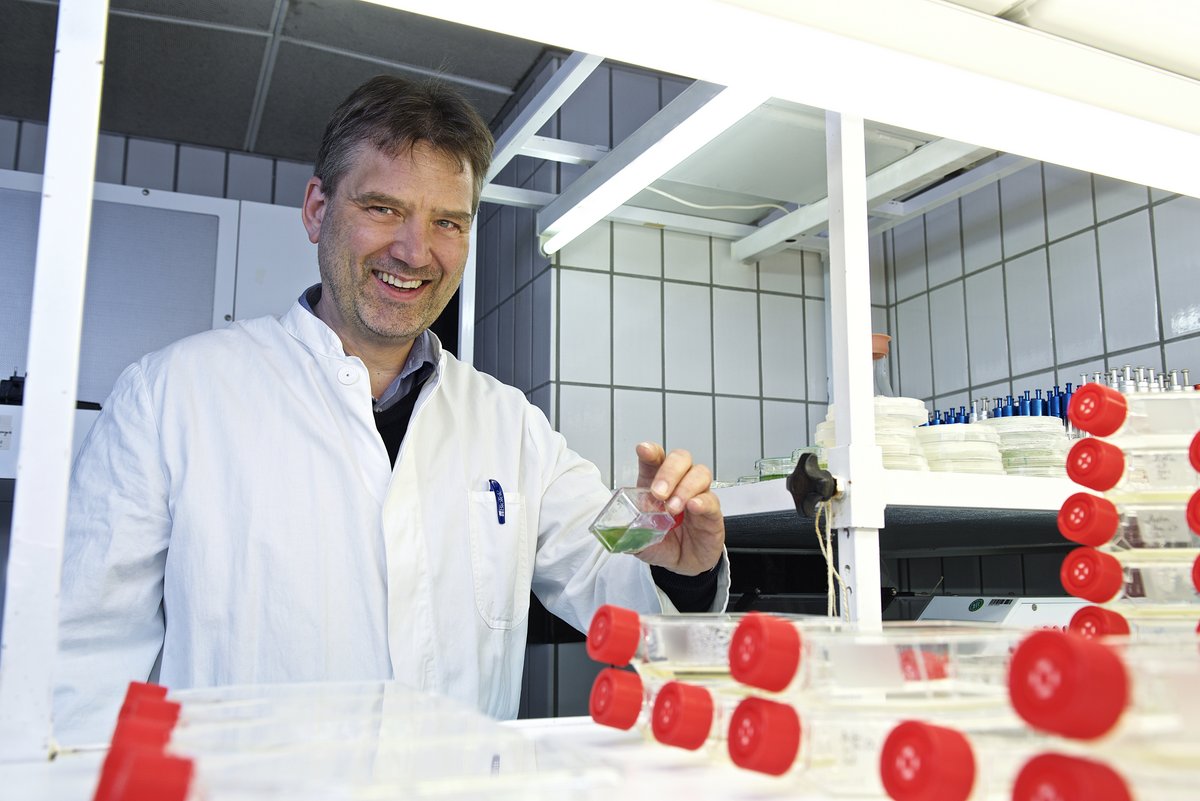
Research Group Kroth PLANT ECOPHYSIOLOGY
The complex life of algae
Algae and cyanobacteria were the first organisms on this planet to develop photosynthesis that produces oxygen by splitting water molecules, thus paving the way for the evolution of the oxygen-depending animals and humans. Over a period of more than 1.5 billion years, algae branched into an array of forms, lifestyles, and sizes, ranging from picoplankton to large kelps. The huge algal diversity and their ecological success is related to evolutionary processes that include the uptake of photosynthetic cells into other cells and ultimately their conversion into photosynthetic organelles, the plastids. These endosymbiotic processes apparently occurred multiple times during algal evolution. The research of the Kroth lab is oriented towards the impact of these endosymbiotic processes on algal cell biology, physiology, metabolism and genetics.
“Algae are fascinating organisms and have often astonished me during my studies in recent years”, says Peter Kroth. “Modern genetic and biochemical approaches will be essential for our understanding of how algal cells work, for elucidating the ecological role of algae in the aquatic systems, as well as for future biotechnological breakthroughs regarding bioenergy and food production”.
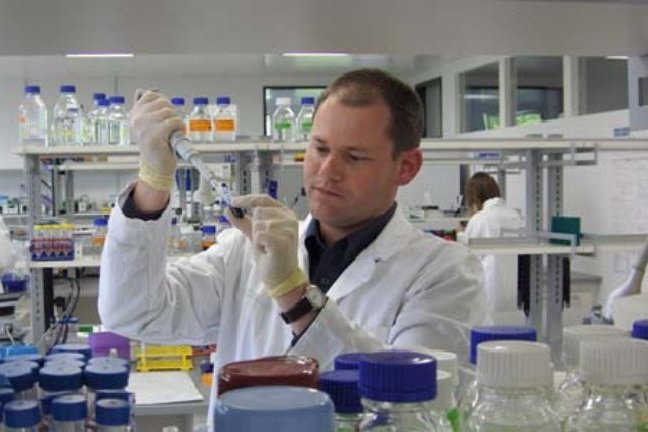
Research Group Legler IMMUNOLOGY & CELL BIOLOGY
Cell migration in health and disease
Chemokine-guided cell migration is essential for many immunological and developmental processes but also drives many diseases. Locally produced chemokines orchestrate cell migration by activating chemokine receptors expressing target cells. The chemokine receptor CCR7, for instance, is crucial for guiding lymphocytes and dendritic cells to draining lymph nodes to launch an adaptive immune response against invading pathogens. Certain cancer cells can also induce CCR7 to migrate along the same chemokine gradient as immune cells to form metastasis in lymph nodes. Understanding molecular mechanisms of chemokine gradient formation and chemokine-triggered signal transduction pathways controlling cell migration processes represents a major research focus of the team of Prof. Daniel Legler, who explains:
“We investigate how chemokine receptor signaling steers cell navigation and how adaptation to different modes of migration is regulated and aim to develop new innovative tools to study cell migration on the cellular and molecular level. We are interested in how different chemokines are able to elicit common as well as distinct (biased) signaling pathways through the same receptor. Is it possible to specifically target chemokine receptor signaling in cancer cells without interfering with immune cell migration?”
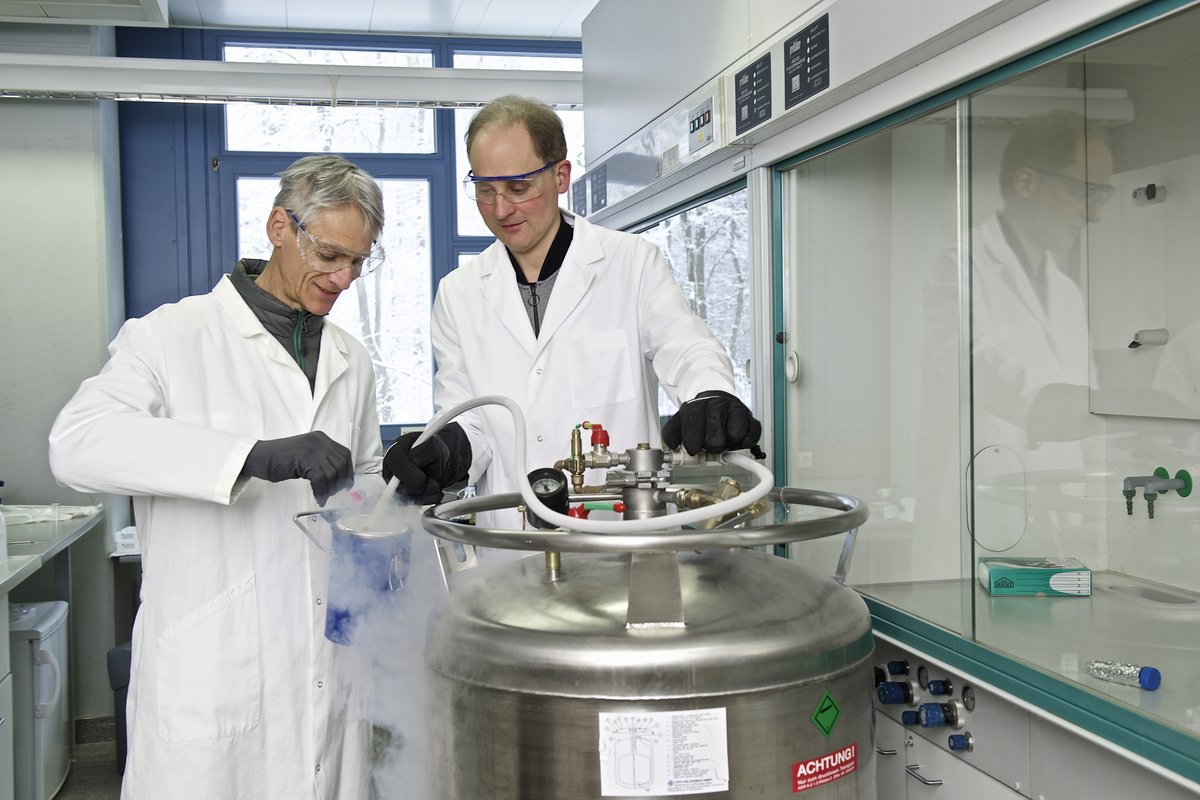
Research Group Leist BIOMEDICINE
Hazard prediction: human & humane
Over 400 pesticides and over 100.000 industrial chemicals are registered for use in the European Union. For most of them, no data are available on how they affect the development of the brain and its functions. To prevent adverse effects on children during pregnancy and after birth, the hazard of all these chemicals needs to be characterized. Only then can authorities make research-based decisions and establish regulations to limit exposure to problematic compounds.
“To use animal experiments for the assessment of so many compounds poses enormous scientific and logistic problems. Additionally, it is associated with a heavy ethical burden. Stem cell technology now offers the possibility to test chemicals directly on human cells and to thus avoid species extrapolations,” Marcel Leist explains. “We have therefore founded here the European Center for Alternatives to Animal Experimentation (CAAT-Europe), which works together with major multi-national companies, regulatory institutions (such as the European Food Safety Agency, EFSA) and many academic partners to establish and apply new test systems, based on human cells.”
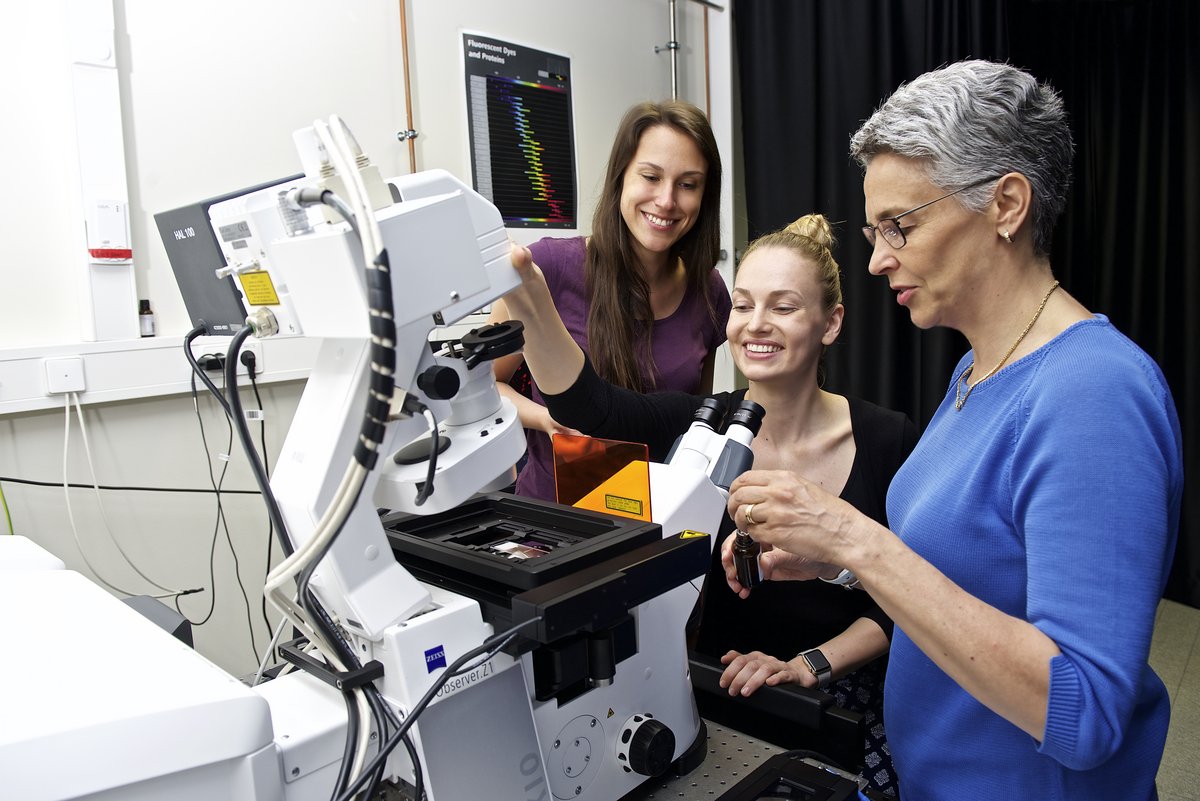
Research Group May BIOIMAGING CENTER
Seeing is believing
Our vision is our most powerful sense, it is inextricably linked to our understanding. Therefore, microscopes, since their development in the late 17th century, have been crucial elements of scientific discoveries and the advancement of knowledge. Today, research in the life and biomedical sciences relies very heavily on imaging technologies, where microscopy is combined with and extended by computer-assisted image processing and quantitation. We speak of light microscopy when the samples are investigated with visible light, in contrast to electron microscopy which uses electron beams. Nowadays, it is possible to combine both methods and obtain images where single molecules can be localized in the complex 3D architecture of cells and tissues.
“We have a passion for images and, as a core facility, support all scientists of the University who want to use advanced light microscopes for their research. For us, it is essential to understand precisely how modern and complex light microscopes work and find and improve methods to measure their performance. What is the best instrument for answering a certain research question? How can I find the best label for imaging a certain structure in my sample? Besides supporting the research projects of our users, we enjoy developing microscopes and methods to study how cells ensure the integrity of our genome: can we use light to damage DNA in the nucleus so that it becomes possible to observe the individual steps of DNA repair as they take place in the live cell? To this end, we need to build our own devices, in particular highly sophisticated lasers, and do so in collaboration with the Department of Physics."
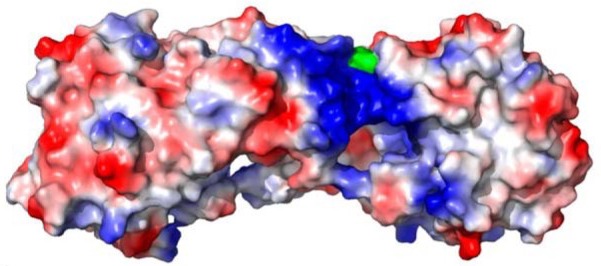
Research Group Mayans BIOPHYSICS & STRUCTURAL BIOLOGY
Diving into the heart of living matter
The unique capabilities of living organisms largely result from the concerted action of the protein molecules that form their biological matter. Acting in coordinated networks, proteins perform chemical reactions, communicate information, and build support structures. Understanding protein function requires knowledge of the three-dimensional atomic structure of these molecules. This atomistic knowledge underpins the development of modern biology as a whole. It also permits unraveling and combating the origins of disease. Studying the molecular mechanisms of proteins is the research focus of the team of Prof. Olga Mayans.
“We want to understand at the molecular level how proteins perform their function and how their dysfunction results in human disease,” Olga Mayans says. “We are particularly interested in the proteins that sense and communicate signals within muscle cells as these are strongly linked to disability and health disorders in the population. Interestingly, we have discovered that muscle proteins have exceptional properties and that they can be translated into biotechnological products of broad utility in cellular biology.”
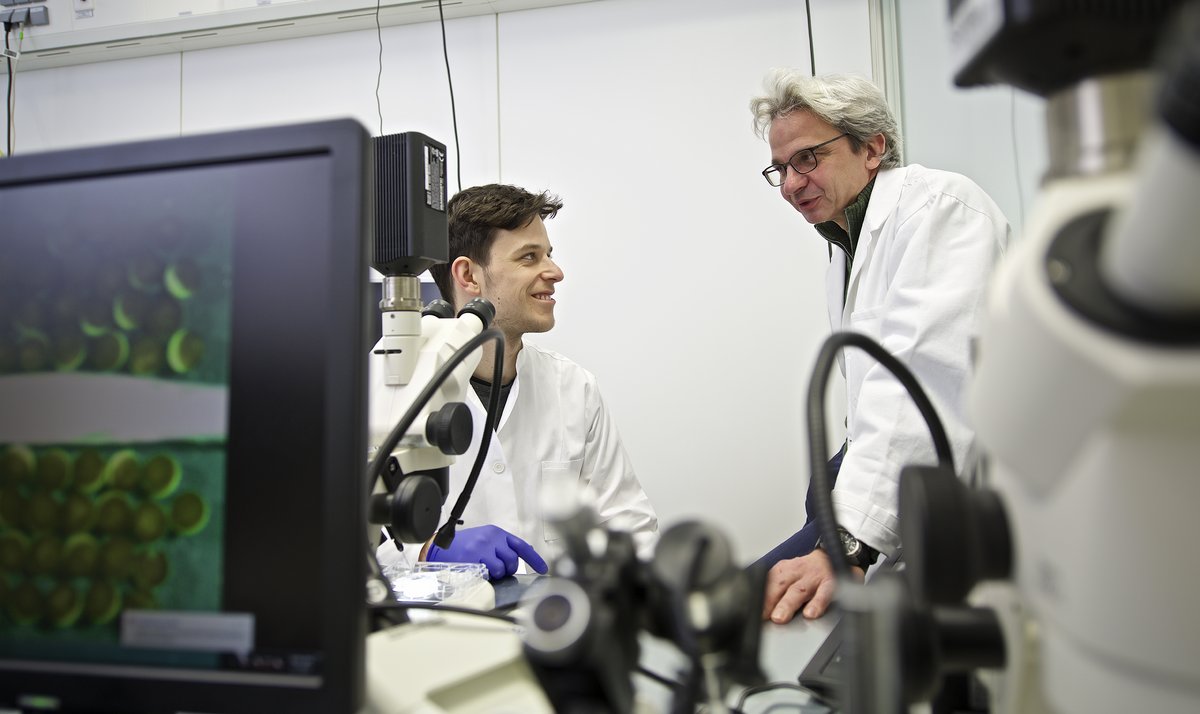
Research Group Mayer MOLECULAR GENETICS
The perfect cycle
The genetic integrity of each organism is intimately tied to the correct segregation of its chromosomes during the mitotic and meiotic cell cycle. In humans, errors in these processes resulting in aneuploid cells with altered genetic content are the basis of many diseases, such as cancer, or other defects, such as infertility. Understanding the molecular mechanisms underlying mitotic and meiotic cell divisions, and how defects in these processes result in disease formation is the major research focus of the team of Prof. Thomas U. Mayer. To address these urgent questions, he combines state-of-the-art techniques in cell and molecular biology with the approach of Chemical Biology, where small molecules are used to modulate protein function in cells with precise timing.
“We want to understand how cells orchestrate the different events of cell division to ensure that they occur at the right time at the right place. Microtubule drugs are very successful in treating cancer, but have severe side effects. We are puzzled by the fact that the novel generation of mitosis-specific drugs are not effective in the clinical setting and would like to understand the molecular reason for that in order to contribute to the development of better drugs.”
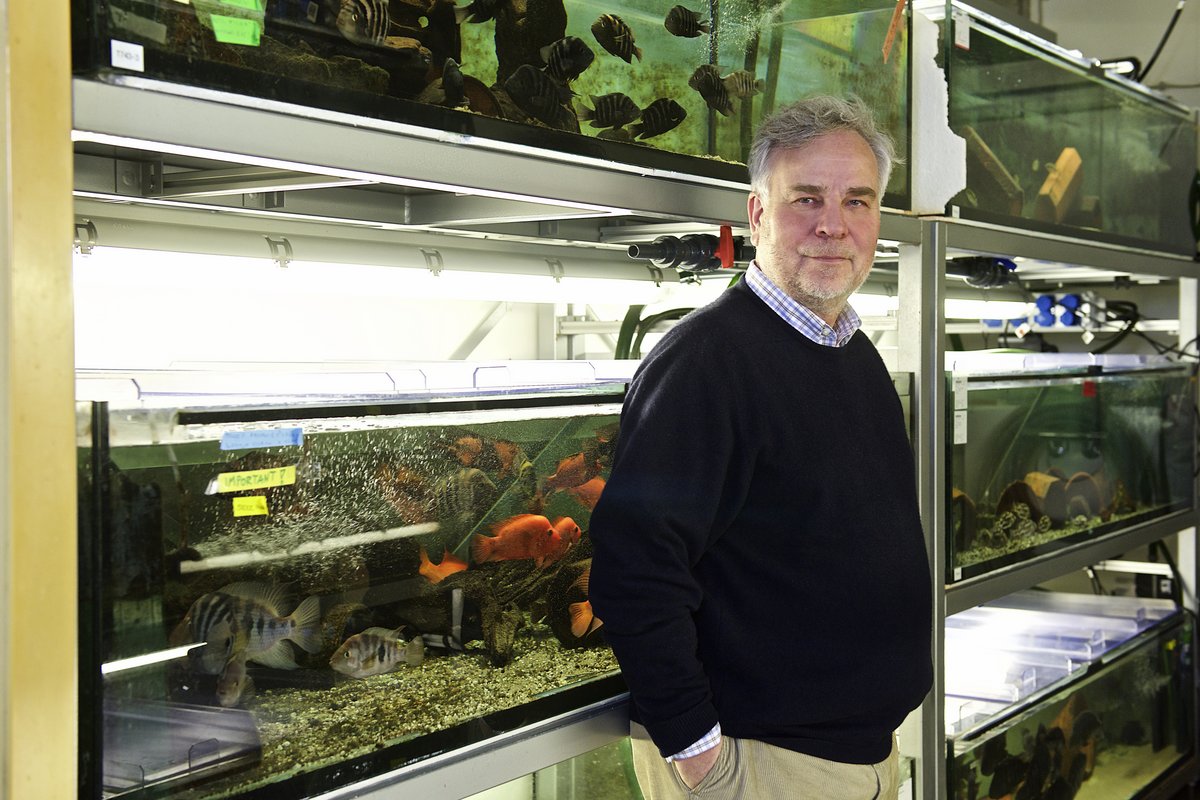
Research Group Meyer EVOLUTIONARY BIOLOGY
On the origin of species
The Meyer group studies several fundamental issues in evolutionary biology, such as morphological differentiation and its developmental basis within a phylogenetic framework, genetic differentiation among populations and species, the evolution of genes and genomes, and the evolution of novel gene functions. Prof. Axel Meyer elaborates the questions at the heart of his research:
“How did biodiversity evolve? How are genomics, developmental biology, and morphological function interconnected? We strive to understand, at an interdisciplinary level, how adaptations and new species arise. The taxonomic focus is mostly, but not exclusively on fish and there particularly on cichlid fishes from Nicaragua and East Africa. In an effort to better understand the origin and maintenance of diversity we mostly use molecular and bioinformatic approaches, to ask how many and what kind of genetic changes accompany morphological differentiation among populations and species.”
Research Group Nouvian NEUROETHOLOGY
Individual brains, collective task
Cooperation between individuals is often required to achieve a given task. Most animals must accomplish this feat without verbal communication or a central coordinator. Eusocial insects provide wonderful examples of such decentralized organization. Focusing on the defensive behavior of honeybees in particular, the team of Dr. Morgane Nouvian seeks to understand how each individual within the group decides what to do in order to produce the adequate collective response. This includes behavioral as well as neurobiological experiments, to unravel how social information is processed by the bee brain.
"We want to understand how a single individual within a large group takes decisions. The stinging behavior of honeybees is a good model system because it is an important decision for the bee (it's sacrificing itself), it's easy to trigger and it's part of a collective effort. What's happening inside the head of a bee when it takes this decision? What information does it rely on, and how is that encoded in the brain? By answering these questions, we hope to gain insights on how individuals process social information in order to cooperate."
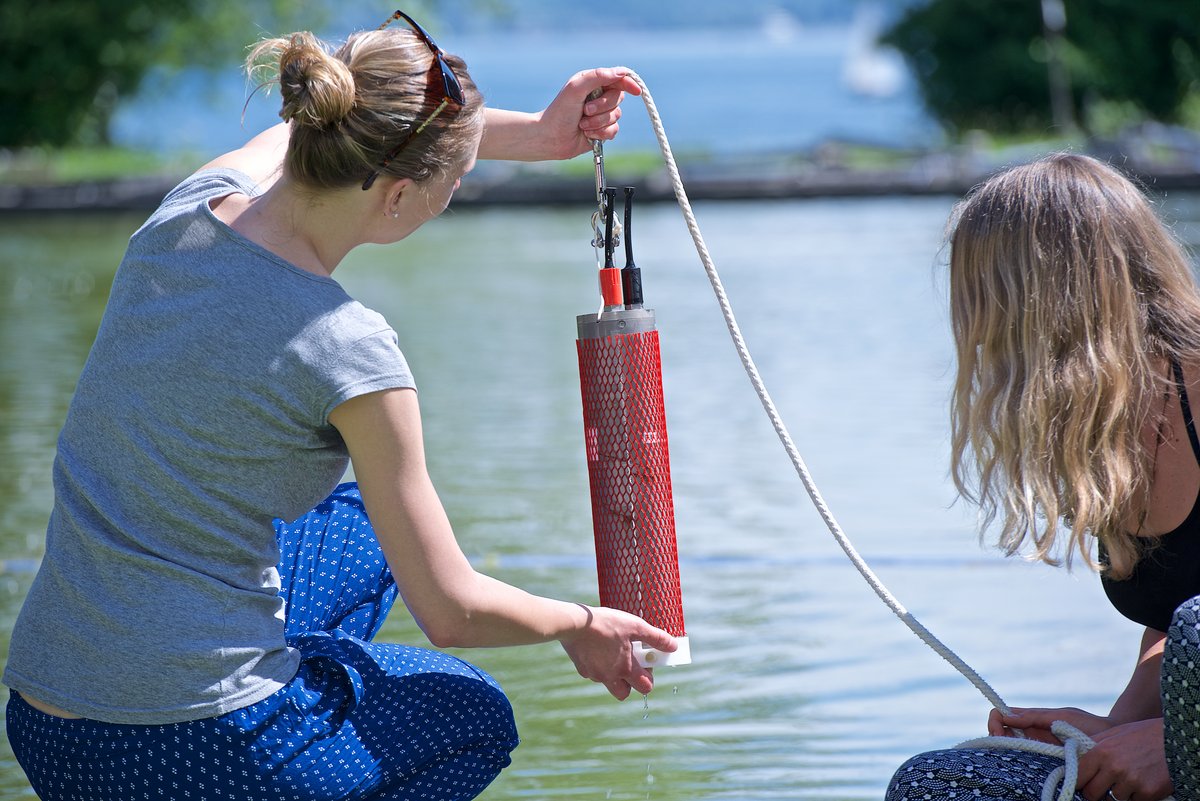
Research Group Peeters ENVIRONMENTAL PHYSICS
Lakes and reservoirs in a changing world
Changing environmental conditions, e.g. changes in climate, nutrient supply from the catchments or utilization of shore regions, influence the dynamics and abiotic conditions within aquatic habitats, the conditions for growth, food web structure and thus the entire ecosystem and ecosystem functioning. Furthermore, these ecosystem changes may feedback on climate warming, because freshwater systems are a major natural source of greenhouse gases, especially of methane, in the global atmospheric budget. How lakes and reservoirs respond to environmental changes and will develop in the future are central questions investigated by the team of Prof. Peeters:
“We aim at a process-based understanding of the dynamic interactions within aquatic ecosystems connecting mechanistically abiotic conditions with the distribution, development and interactions of organisms. In addition, we investigate the factors that influence carbon turnover in lakes and reservoirs, e.g. the distribution and release of methane and carbon dioxide. As we cannot control or deliberately influence the conditions affecting entire ecosystems, we typically combine intensive empirical field investigations and statistical data analysis with numerical modelling to allow generalization of the results and prediction of ecosystem response to changing conditions.”
Research Group Rossy CELLULAR IMMUNOLOGY
Mechanisms of the immune response
T lymphocytes play a central role in the adaptive immune system, either by orchestrating the response of other immune cells or by directly removing infected and cancer cells. Pivotal to all T cell subtype functions is the T cell receptor (TCR), on which antigen recognition is based. TCR engagement determines not only the complex selection process leading to functional and yet non-self-reactive T cells, but also the detection of pathogens and cancer cells as well as the establishment of immunological memory. The team of Dr. Jérémie Rossy focuses on unravelling the mechanisms that control the strength and duration of the signal from the TCR.
“The aim of our research is to decipher the mechanisms underpinning the activation of T cells” says Jérémie Rossy. “We are currently working on two main projects. A first one is focused on how T cells control the amount of receptor they expose at their surface. What is the cellular machinery that retrieve and deliver these receptors from and to the plasma membrane? The second project is centered on mechanotransduction: how can cell tension regulate T cell activation?”
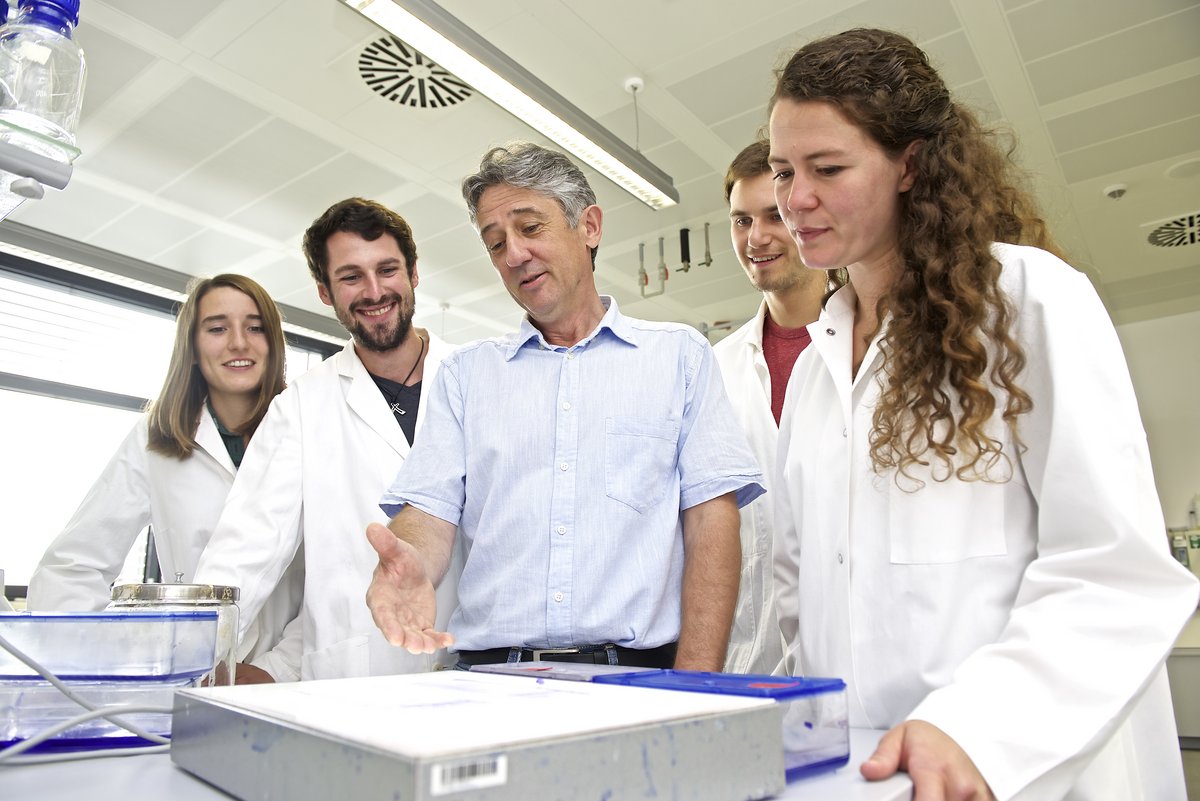
Research Group Scheffner CELLULAR BIOCHEMISTRY
The chemistry of life
The existence and functionality of any cell or organism depends on the accurate execution of thousands of chemical reactions in a temporally and spatially controlled manner. This gigantic task is achieved by the action of proteins, which in turn are controlled by covalent modification with other molecules such as phosphate or ubiquitin. Elucidating how modification with distinct molecules affects protein function and how mishaps in these affect the function and viability of cells is the major research focus of the team of Prof. Martin Scheffner.
“Attachment of ubiquitin to other proteins is one of the most versatile and complex modifications in eukaryotic cells and is involved in the control of many fundamental biological processes,” Martin Scheffner says. “Thus, it is not surprising that dysregulation of this modification system contributes to the development of numerous human disorders. A thorough understanding of this system is therefore not only of interest for basic research but will also advance our knowledge about the mechanisms underlying human disease.”
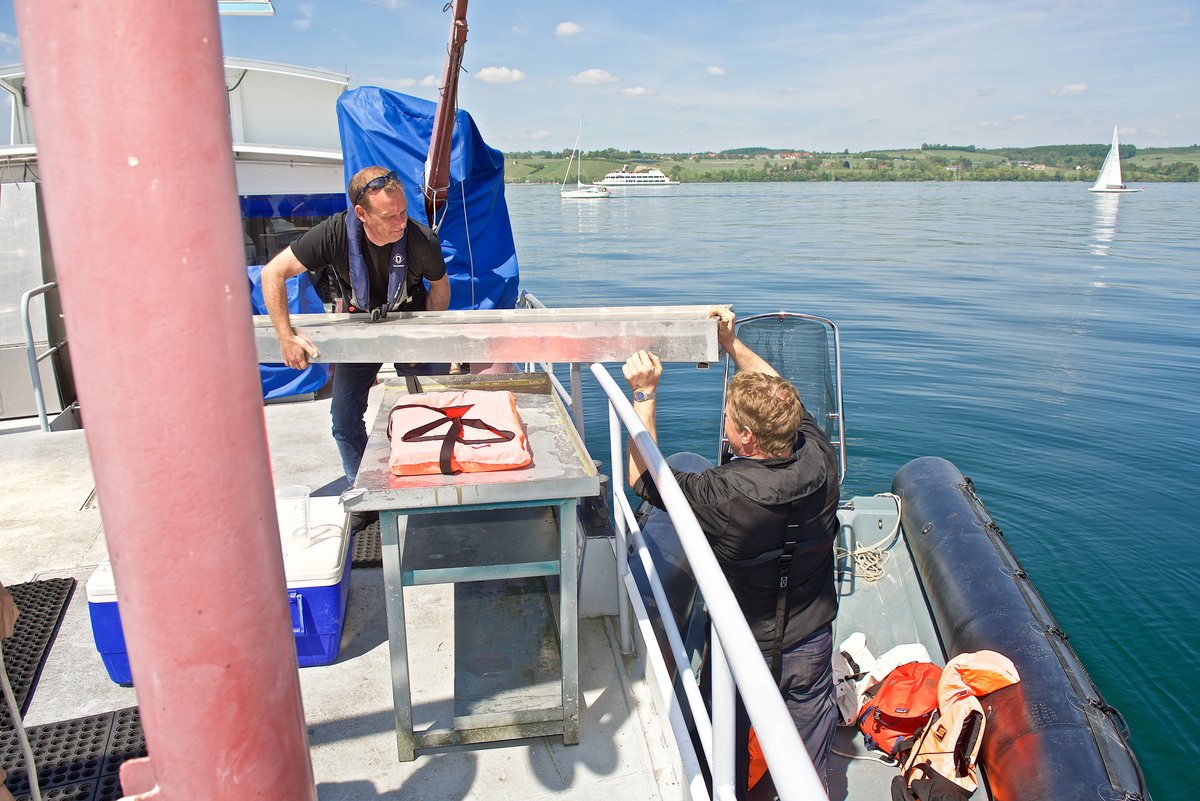
Research Group Schleheck MICROBIAL ECOLOGY
Bacteria rule the world
The vast majority of life on planet Earth is microbial, and the survival and growth of these organisms in diverse habitats and complex communities require biochemical transformations. The central goal of the research done by the team of Prof. David Schleheck is to discover and understand bacterial metabolism. For example, pathways are investigated in anaerobic bacteria for transformation of organosulfur components of the human diet into harmful hydrogen sulfide, and pathways in aerobic or anaerobic environmental bacteria for transformation of natural compounds or xenobiotic industrial chemicals. Other research done in the Schleheck group involves the bacterioplankton community in Lake Constance and bacterial biofilm formation and biofilm control.
“We want to understand how bacteria as part of the gut microbiome, or in the environment such as in Lake Constance, transform natural or xenobiotic organic compounds, and which degradation pathways and enzymes are employed in these organisms”, David Schleheck explains. “Therefore, our research comprises bacterial cultivation as well as physiology, biochemistry, analytical chemistry, genomics and proteomics; we also analyze microbial communities directly in their natural habitat. Ultimately, the accumulated knowledge should inform new approaches to improve human and environmental health.”
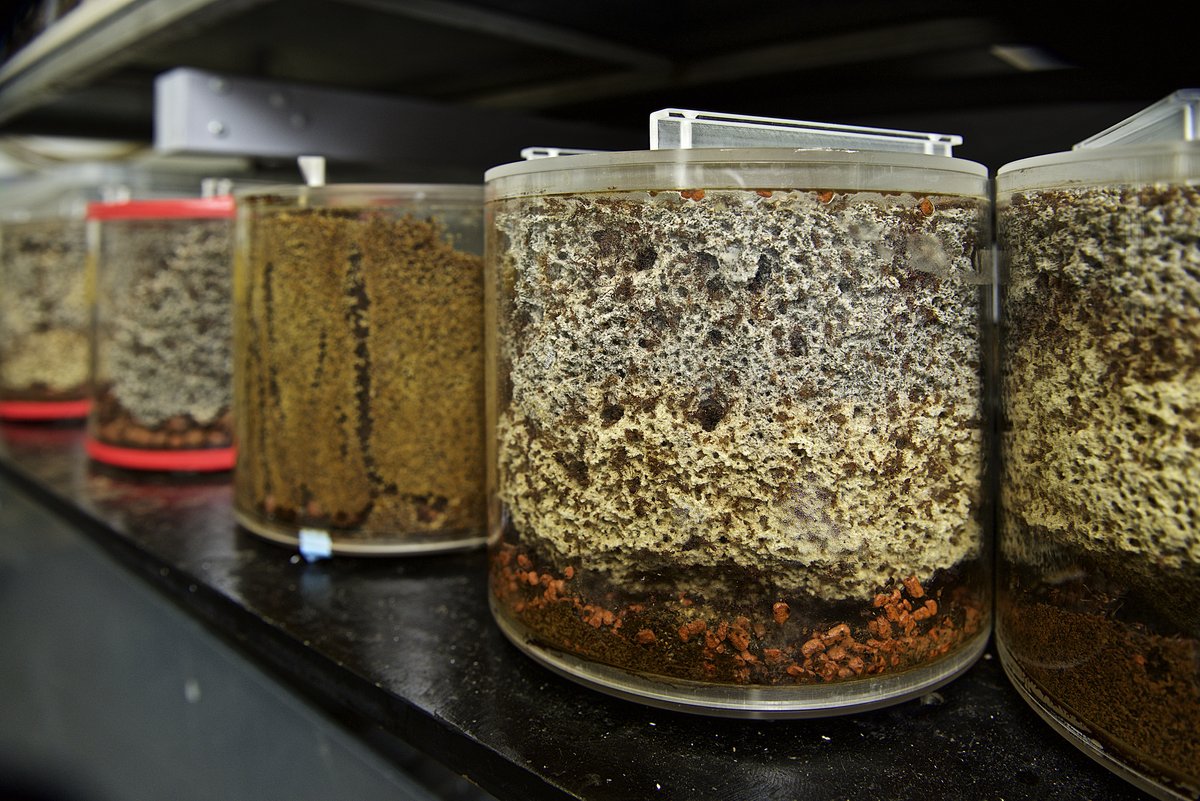
Research Group Spiteller CHEMICAL ECOLOGY & BIOLOGICAL CHEMISTRY
Chemical communication in the microbe world
In nature, organisms do not live alone but together with neighbours that positively or negatively affect them. Organisms are forced to react and adapt to their environment. Most organisms interact using chemical compounds for communication and defense. Although still often overlooked, microorganisms play a crucial role in ecosystems as beneficial mutualistic symbiotic partners or as disease-causing pathogens. The team of Prof. Dieter Spiteller investigates the chemical basis of the ecological role of microorganisms in microbe/microbe, plant/microbe, as well as insect/microbe interactions in an interdisciplinary approach using bioassays, analytical chemistry, and genome mining.
“We want to understand how (micro)organisms interact with their environment. Investigating the nature and biological function of (secondary) metabolites will provide fascinating insights of how they shape the complex relationships across kingdoms, - e.g. in the microcosms of leaf cutting ants - consisting of the ants, their garden fungus, their microbial symbionts, and pathogenic fungi. In addition, an in-depth understanding of these little studied chemical interactions can lead to the discovery of unknown bioactive compounds. For example, novel antibiotics are urgently needed due to increasing resistances of pathogens”, Dieter Spiteller points out.
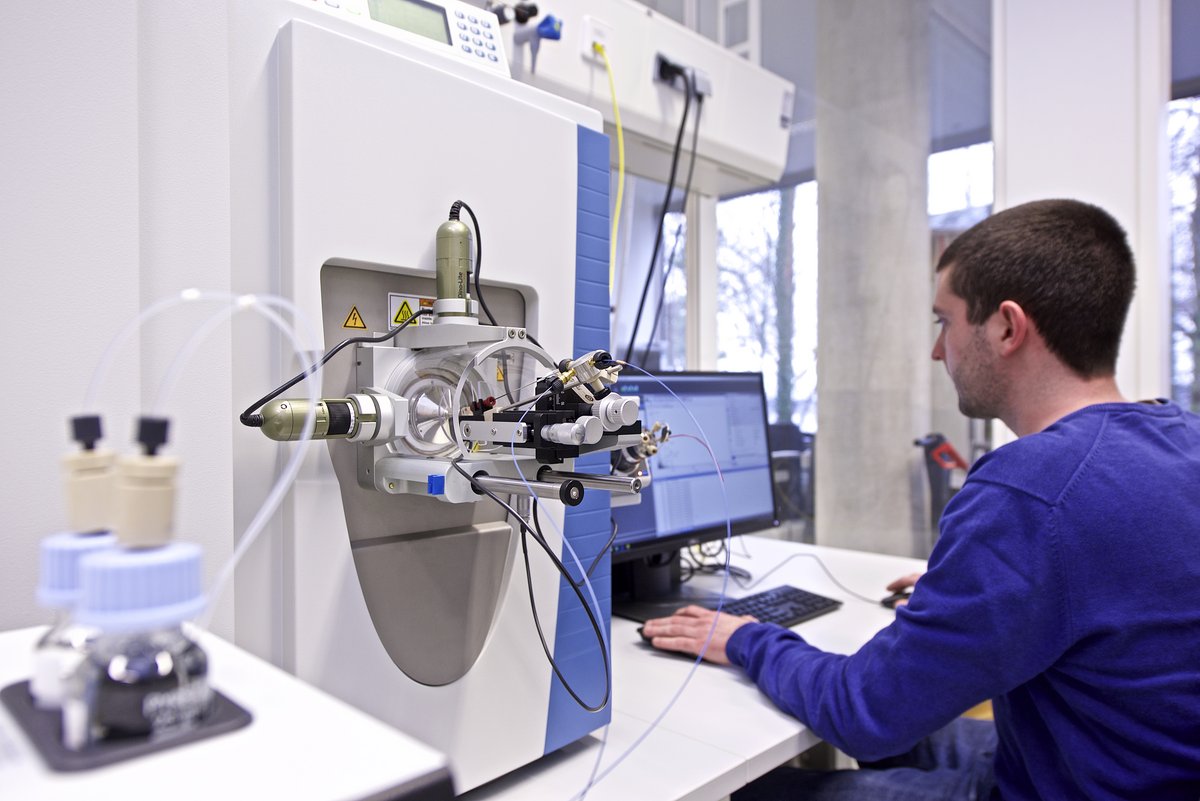
Research Group Stengel BIOCHEMISTRY & PROTEOMICS
How is the proteome organized?
Cells need to control an almost infinite number of processes and biochemical reactions in time and space. A key concept is the organization of the cellular space into functional compartments. Cellular compartmentalization scales from single molecules over protein complexes of varying complexity to large membrane surrounded organelles. Studying compartmentalization on a structural level therefore needs to be able to bridge such different size dimensions.
“To this end, my group is using biochemistry and bioorthogonal chemistry and is applying and developing integrated mass spectrometry-based approaches that can address structural features at both the molecular and the systems level and at a timescale that facilitates probing of dynamics”, says Florian Stengel. “Eventually, this will enable us to investigate questions that require such a distance-bridging approach and to address for example such fundamental biological questions as how single molecules organize themselves within such functional compartments.”
Research Group Straile FOOD WEB ECOLOGY
Lake food webs in a changing world
Lakes harbor a fascinating diversity of species which interact in complex food webs. This diversity is important for ecosystem services which lakes provide for humans. How diversity and food web interactions respond to environmental changes such as climate warming, eutrophication or oligotrophication, and invasions of non-native species is of critical importance for ecosystem functioning and ecosystem services. In our group, responses of a variety of taxa (from phytoplankton to fish) to environmental change as well as species interactions are studied using analyses of long-term data series, paleo-limnological methods, mesocosm as well as laboratory experiments.
“How do abundances and traits of species respond to environmental change? How will these responses affect food web interactions? How do changes in food web interactions feed back to the abundances of species? We study these questions mostly using the Lake Constance food web as a model system”, points out Dietmar Straile, “as in this lake huge environmental changes have been taking place which are documented by unique long-term data sets.”
Research Group Strandburg-Peshkin ANIMAL BEHAVIOR
Communication and coordination in collectives
Throughout the natural world, social animals coordinate their behavior in a variety of different contexts, and in the face of different social and ecological constraints. How is such coordination achieved? Are there common principles underlying how groups communicate and coordinate with one another across different systems and contexts? And what can we learn from the ways in which systems differ?
“We are interested in how group-living animals coordinate with one another and make decisions collectively,” explains Ariana Strandburg-Peshkin. “In particular we want to understand how the social relationships among group members and the ways in which they communicate with one another affect these dynamics. To address these questions, we collaborate with long-term field studies across different species to collect data on the movements, vocalizations, and behaviors of entire social groups. We then combine these data with mathematical models and field experiments to uncover the factors driving individual decisions, and how these decisions ultimately scale up to affect group-level outcomes such as consensus decisions about where to move and collective responses to external threats.”
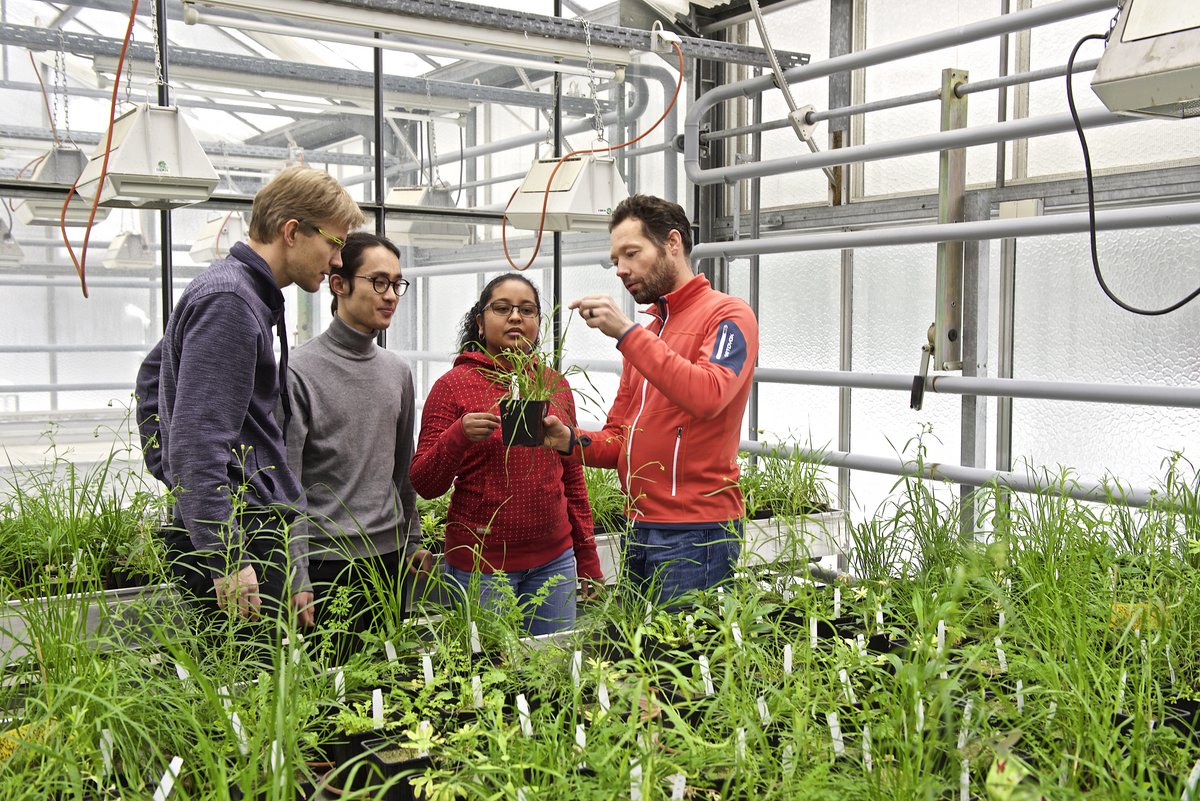
Research Group van Kleunen ECOLOGY
A green take on global change
Plants show a mind-blowing diversity with over 350.000 species. How this diversity evolved is of fundamental interest and how it will change due to numerous challenges such as climate warming, eutrophication, pollution, and biological invasions is one of the big questions for biologists. As primary producers, plants are at the basis of food webs and global change will thus have far-reaching ecological consequences.
“We investigate why and how some of the many alien plant species that we have introduced, for example as garden plants, have managed to invade natural habitats, while many other alien plants failed to do so,” Mark van Kleunen explains. “Is this invasion ability related to certain species traits, or can other global change drivers, such as land use change and climate change, mainly explain biological invasions? Do similar factors also determine why some native species are common and others have become endangered? We try to find general answers to these questions by analyzing big global databases on species distributions, and by conducting large scale field and greenhouse experiments.”
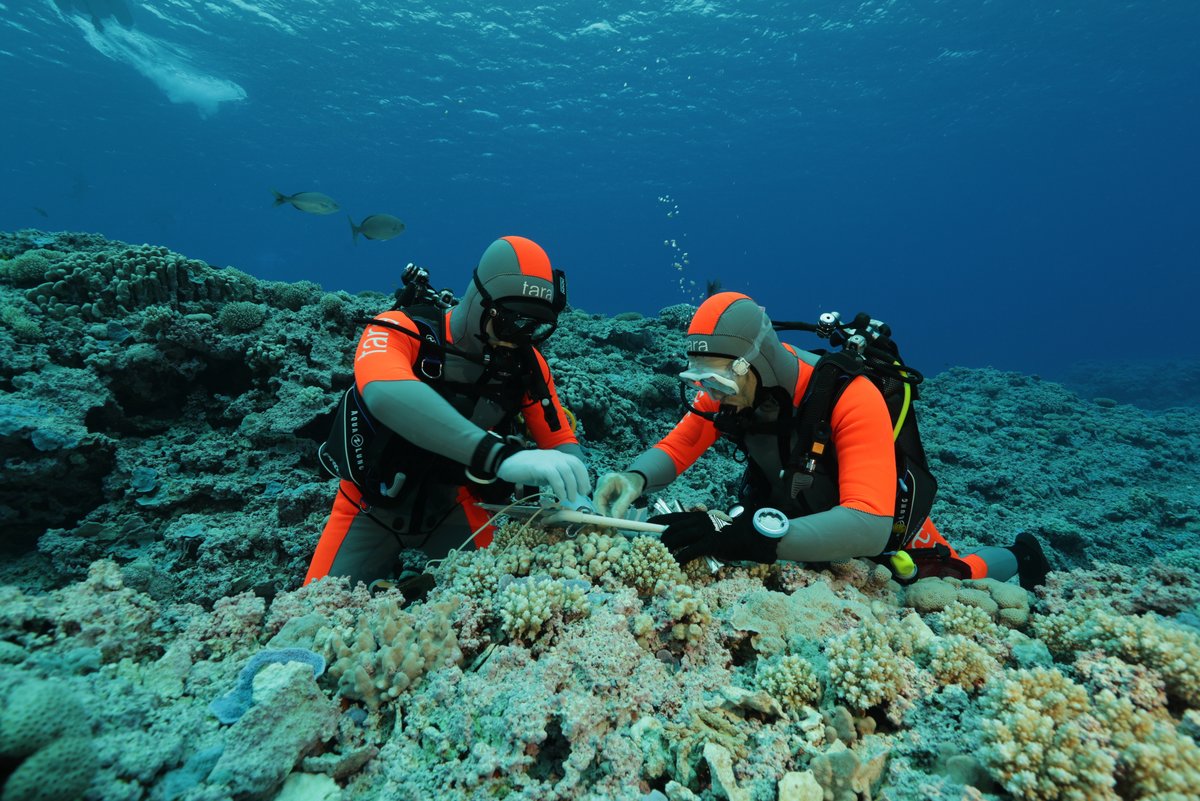
Research Group Voolstra ADAPTATION GENETICS
Animals in a microbial world
All animals associate with microbes that contribute to their ecology, well-being, and even adaptation. We are witnessing a paradigm shift that considers animals and associated microbes as a functional unit, the so-called metaorganism. Which of the billions of microbes present are beneficial to their host organism and why, how pathogens affect metaorganism health, and how host-microbe associations will change under climate change are big questions for biologists. Understanding structure, function, and adaptation of aquatic metaorganisms as well as exploring possibilities for microbial manipulation (‘probiotics’) are among the research topics studied by the team of Prof. Christian R Voolstra.
“We investigate the role of microbes in metaorganism adaptation and stress resilience”, states Christian R Voolstra. “Given that animals have long generation times, evolution is likely to slow to catch up with the changes brought about by climate change. We study whether association with different microbes can extend the capabilities of animal host organisms and how flexible and long-standing such associations are. In particular, we study reef-building corals, the foundation species of coral reef ecosystems. More than 500 million people worldwide depend on functioning coral reefs and we have lost 50% in the last decades due to local human impact and climate change. We employ model system-assisted approaches in combination with field-based ecosystem surveys to identify factors and mechanisms that increase metaorganism resilience. This will hopefully lead to the development of novel mitigation measures to counter the effects of climate change on aquatic/coral reef ecosystems.”
